We’re sorry, this site is currently experiencing technical difficulties. Please try again in a few moments. Exception: request blocked
- Subscribe Digital Print

- overtourism
- Shangri-La Dialogue
- Tokyo governor race
- Latest News
- Deep Dive Podcast
Today's print edition
Home Delivery
- Crime & Legal
- Science & Health
- More sports
- CLIMATE CHANGE
- SUSTAINABILITY
- EARTH SCIENCE
- Food & Drink
- Style & Design
- TV & Streaming
- Entertainment news

Japan to ease tourism restrictions and raise daily arrival cap to 50,000
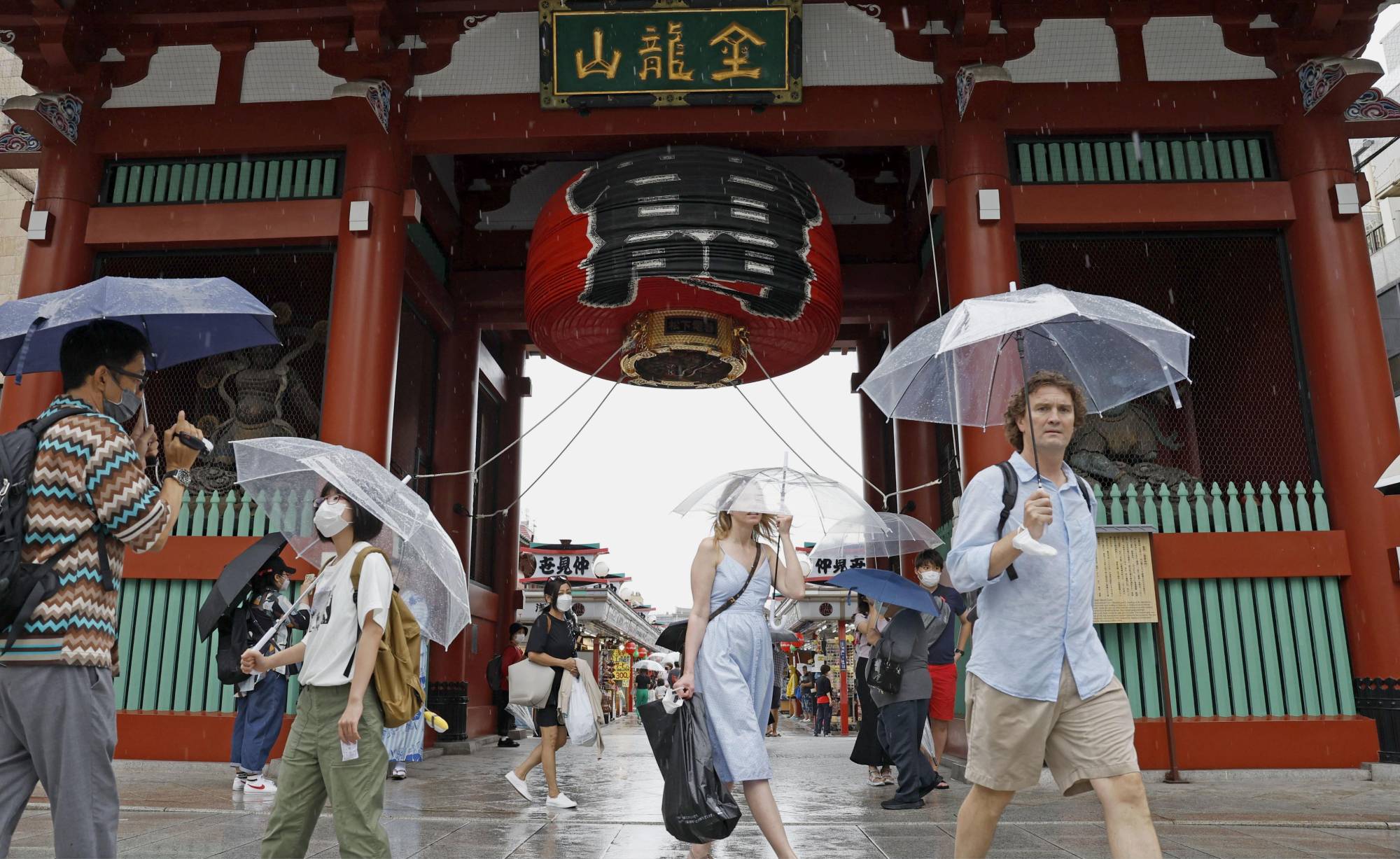
Prime Minister Fumio Kishida said Wednesday that Japan will allow the entry of nonescorted visitors on package tours and raise the daily arrival cap to 50,000 starting Sept. 7 — a significant step toward the full resumption of tourism.
The prime minister also said he will consider easing restrictions further based on various conditions at home and abroad, aiming to put border measures on par with fellow members of the Group of Seven major countries.
Japan has been allowing foreign tourists into the country since June, but only on guided tours .
The government has not yet come up with details of what constitutes a package tour, but guidelines will be released in the coming days, a government official said.
But a tourism ministry official said that tourists will still need to have “sponsors,” or travel agencies in Japan that they can contact if they get infected with the coronavirus, meaning individual tourists, such as backpackers traveling without a sponsor, won’t be allowed in.
Still, the latest announcement will be welcome news for the country’s battered tourism industry , as the strict, guided tours have proven to be unpopular with foreign tourists .
In the two months through the end of July, only 8,155 foreign tourists visited Japan, according to the Immigration Services Agency.
In July, an online survey conducted by D2C X, a tourism marketing firm, showed that 72% of about 1,700 respondents said they would — or were likely to — give up visiting Japan if the current border controls remained in place.
Currently, foreign tourists need to reserve a guided tour and then apply for a visa — a time-consuming process that discourages visitors from coming to Japan.
Last week, Kishida said Japan will drop pre-arrival PCR tests from Sept. 7 if passengers have received three shots of an approved vaccine.
The daily arrival cap — the number of people able to enter Japan each day, including Japanese nationals and foreign residents — will be raised to 50,000, or 2.5 times the current figure of 20,000.
The number has been raised in stages over the past six months or so. In February, the figure was 3,500, but it was raised to 10,000 in April and then to 20,000 in June.
Om Prakash, president of the American Chamber of Commerce in Japan (ACCJ), welcomed the latest easing of border restrictions.
"The ACCJ believes these are important steps toward reviving the economy,” Prakash said in an email. “We highly encourage Japan to align travel policies with other G7 countries, and in order to restore Japan’s reputation as a welcoming and open place, the government should move quickly to restore visa waiver eligibility for business travelers and tourists from countries of origin previously eligible for visa-free entry."
Timeline of Japan’s COVID-19 border restrictions
Jan. 31, 2020: Japan bans the entry of foreign nationals arriving from China’s Hubei Province, the first entry ban imposed due to the coronavirus. The ban was gradually expanded to 24 countries through the end of March.
April 1: Less than a month after the spread of COVID-19 was declared a pandemic, Japan halts entries into the country by foreign nationals, including foreign residents of Japan, from 49 countries, including the U.S., the U.K. and South Korea, bringing the total number up to 73 nations.
May 14: Japan expands its entry ban to cover a total of 100 countries and regions.
Aug. 28: The entry ban is expanded further to cover 159 countries and regions.
Sept. 1: Japan lifts ban on re-entry of foreign residents.
Oct. 1: Japan lifts its ban on entry by foreign nationals planning to relocate to the country.
Dec. 28: Japan again implements a ban on the entry of nonresident foreign nationals.
Jan. 14, 2021: Japan suspends a business-track travel program with some countries and mandates that all people arriving in the country quarantine at home for 14 days.
Nov. 8: Japan opens its borders to foreign students, interns and other business travelers.
Nov. 30: Japan bans the entry of nonresident foreign nationals after the discovery of the highly contagious omicron variant.
March 1, 2022: Japan allows foreign nationals arriving for purposes other than tourism to enter the country.
June 1: Japan raises daily arrival cap to 20,000.
June 10: Japan allows entry of foreign tourists on guided tours.
Sept. 7: Pre-arrival PCR tests to be dropped for travelers who have received three shots of an approved COVID-19 vaccine. Japan will also raise the daily arrival cap to 50,000 and allow entry of foreign tourists on nonguided tours.

In a time of both misinformation and too much information, quality journalism is more crucial than ever. By subscribing, you can help us get the story right.
- Things to Do
- Food & Drink
- Shopping & Style
- Coca-Cola Foodmarks
- Restaurants & Cafes
- Music & Nightlife
- Neighborhoods
- Los Angeles

Japan’s new border and entry rules explained – for tourists and residents
UPDATED September 26: everything you need to know about Japan’s new Covid-19 requirements for tourists and residents

Are you travelling to Japan on or after October 11? Read our guide on visa-free travel, valid vaccines, PCR tests and more here .
Covid-19 restrictions are ever-changing and it can be hard to keep track of new information on Japan’s border restrictions. To bring you up to speed on the latest rule changes, we’ve answered some of the most common questions regarding Japan's current border restrictions.
The following information is based on the government's recent decision to reopen Japan's borders fully for tourism . Some details regarding the travel requirements for tourists – including visa-free terms and accepted Covid-19 vaccines – are still being finalised by the Ministry of Foreign Affairs . We'll keep you updated as more information becomes available.
Can tourists visit Japan yet?
Good news! After over two-plus years of strict border rules and Covid-19 restrictions, Japan is finally reopening to independent travellers on October 11. Along with the resumption of visa-free entry, tourists will no longer be expected to book their trips via travel agencies.
Will I need to get a PCR test?
Those who are fully vaccinated (including a Covid-19 booster shot) are no longer required to get a pre-departure PCR test.
Travellers coming from a ‘blue’ country or region are also exempt from testing upon arrival. However, those who have not received a Covid-19 booster shot and are travelling from a ‘yellow’ country or region may be subjected to a PCR test after landing.
Countries and regions listed in the blue category include the UK, USA, Australia, Canada, China, Hong Kong, South Korea, France and Italy. You’ll find the full list of designated countries and regions here .
Will I have to quarantine when I get there?
Travellers arriving from countries listed under the blue category are not required to self-isolate after entering Japan, regardless of their vaccination status. Fully vaccinated travellers coming from a country or region listed under the yellow category are also exempt from quarantine.
If, however, you are travelling from a yellow country and have not received three doses of a Covid-19 vaccine, you may be subject to five days of self-isolation (three days if you take a voluntary test on the third day and the result is negative).
What do I need to enter Japan?
Here is what you’ll need to enter Japan in addition to a visa:
- A signed copy of the Written Pledge (only for those who are required to quarantine)
- A completed questionnaire administered digitally by the Ministry of Health, Labour and Welfare (you can do this via the Fast Track system )
- A Covid-19 vaccination certificate (you don’t have to be vaccinated in order to enter Japan, but arrivals in the yellow category can reduce their quarantine period by submitting a valid vaccination certificate)
You may expedite some airport arrival procedures via Fast Track (see our guide here ). Still unsure of what entry procedures may look like for you? You can select your nationality and vaccination status on the MHLW website to check which border measures apply to you.
How many people can enter Japan?
Japan currently allows up to 50,000 arrivals per day, but this entry cap will be scrapped on October 11.
What are Japan’s other Covid-19 restrictions?
While the Japanese government is still urging people to take precautions, such as avoiding crowded places, face masks are no longer recommended outdoors as long as people are able to maintain a safe distance from others.
This article was originally published on February 25 and updated on September 26. Check the Mofa website for the latest updates.
More from Time Out
Confirmed: independent tourists can visit Japan visa-free from October 11
In photos: your first look at the exhibits of the upcoming Ghibli Park
Starbucks is releasing a special Peanuts collection only in Japan
Ice skating is now possible outside of winter at Mitsui Outlet Parks in Japan
This coastal glamping site in Naoshima has futuristic dome tents and sauna pods
Want to be the first to know what’s cool in Tokyo? Sign up to our newsletter for the latest updates from Tokyo and Japan.
- Emma Steen Staff Writer, Time Out Tokyo
Share the story
Discover Time Out original video
- Terms of use
- Work for Time Out
- Time Out Group
- Advertising
- Modern slavery statement
- Manage cookies
Time Out Tokyo
- Magazine subscription
- Digital edition
- Buy the guide to Tokyo
Time Out products
- Time Out Worldwide
The Ministry of Foreign Affairs website uses JavaScript. Please turn on "JavaScript" and use it.

Consular Services
Measures for cross-border travel.
1. Border Measures
2. contact information for inquiries.
- 3. Old measures (Archive)
Vaccination certificates and pre-departure tests are no longer required to enter Japan. Travelers and returnees with COVID-19 symptoms will no longer be subjected to on-arrival testing. Travelers with a positive COVID-19 test result will not be treated at designated facilities.
Genomic Surveillance of Infectious Diseases has begun from 12:00 a.m. (JST) on May 8.
- For information on Visa, please refer to Border enforcement measures to prevent the spread of novel coronavirus (COVID-19)
- For procedures upon arrival at the airport and the status of residence: Contact: Immigration Service Agency of Japan TEL (Main): 03-3580-4111
- For general inquiries regarding border measures for entry into Japan; Contact: Ministry of Health, Labor and Welfare TEL: 03-5253-1111 (Japanese only)
- For inquiries regarding flight information; Contact: Ministry of Land, Infrastructure, Transport and Tourism, Civil Aviation Bureau, Director for Crisis Management Office TEL: 03-5253-8700
3. Old measures Old measures is moved to the archive below.
- Old measures (Archive)
- International edition
- Australia edition
- Europe edition
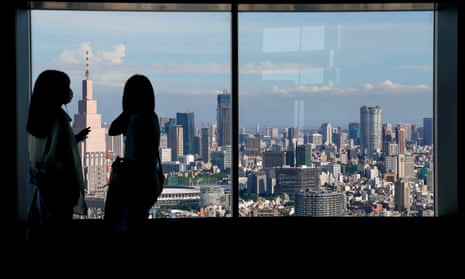
Japan to reopen to tourists after more than two years of Covid border restrictions
PM says relaxation will take effect from 11 October as Hong Kong scraps hotel quarantine measures for visitors
- See all our coronavirus coverage
Japan has announced it will lift tough Covid restrictions on foreign tourists, reopening the borders after two and a half years.
The prime minister, Fumio Kishida, said on Thursday that the pandemic had interrupted the free flow of people, goods and capital that had helped the nation flourish.
“But from 11 October, Japan will relax border control measures to be on par with the US, as well as resume visa-free travel and individual travel,” Kishida said at the New York Stock Exchange. He is in the city for the United Nations general assembly.
Japan, along with China, has continued to impose tough restrictions on visitors while much of the world has moved on from the pandemic. But unlike China, it never imposed a strict lockdown during the crisis.
Tourists who come to Japan will benefit from a weak yen, which has plummeted so low against the dollar that the finance ministry intervened in the currency market on Thursday for the first time since 1998.
The return of the visa-waiver program suspended in March 2020 will restore the ease of access that saw a record 31.9 million foreign visitors to the country in 2019.
Since June, Japan has allowed tourists to visit in groups accompanied by guides, a requirement that was further relaxed to include self-guided package tours.
The cautious approach to reopening had been deliberate, said James Brady, the Japan analysis lead at US-based consultancy Teneo.
Kishida “took office a year ago knowing that perceived mishandling of the pandemic had been a key factor in undermining public confidence” in his predecessor’s government, Brady said.
“He has been extremely careful not to repeat those mistakes.”
Japan has recorded about 42,600 coronavirus deaths in total – a vastly lower rate than many other countries – and 90% of residents aged 65 and over have had three vaccine shots.
There is no law requiring people to wear masks, but they are still near-ubiquitous in public places such as trains and shops, with many Japanese willing to sport masks when ill even before the pandemic.
While the return of mass tourism should give a “slight bump” to Japan’s economy, the benefits were likely to be limited by China’s zero-Covid policy, Brady said.
“Much of the economic benefit pre-pandemic came from high numbers of Chinese visitors coming and spending lots of money on tech products, cosmetics.”
But “currently, Chinese citizens face their own travel restrictions at home and won’t be travelling to Japan in large numbers”, Brady said.
There is pent-up demand for travel to the country, however, according to Olivier Ponti, vice-president of insights for travel analytics firm ForwardKeys.
“Searches for travel to Japan reached their highest point this year at the end of August,” he said. And while flight bookings were just 16% of 2019 levels in early September, “we’d expect bookings to jump” when the visa rules are scrapped.
Liz Ortiguera, CEO of the Pacific Asia Travel Association, said demand from Europe might still be subdued “due to the increase in the cost of living in Europe caused by the Russian-Ukraine crisis plus the rising fuel costs driving up air travel costs”.
Meanwhile, Hong Kong announced on Friday it would end mandatory hotel quarantine, scrapping some of the world’s toughest travel restrictions that have battered the economy and kept the finance hub internationally isolated.
The long-awaited move will bring relief to residents and businesses who have been clamouring for the Asian business hub to rejoin the rest of the world in resuming unhindered travel and living alongside the coronavirus.
For the past two and a half years, Hong Kong has adhered to a version of China’s strict zero-Covid rules, deepening a brain drain as rival business hubs reopen.
The announcement leaves mainland China as the only major economy still requiring a lengthy quarantine for international arrivals.
The chief executive of Hong Kong, John Lee, said the current three days of hotel quarantine would be reduced to zero for those arriving into Hong Kong from overseas and Taiwan.
Travellers will be subject to PCR tests on arrival and will be unable to visit restaurants and bars for the first three days under a system authorities have dubbed “0+3”.
“Under this arrangement, the quarantine hotel system will be cancelled,” Lee told reporters.
- Coronavirus
- Asia Pacific

Japan v North Korea World Cup qualifier resumes rivalry that extends beyond football

Japan plane crash: a visual guide to the Tokyo airport collision

Japanese kabuki actor gets suspended sentence for assisting parents’ suicide
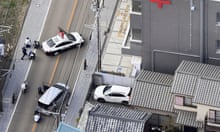
Police arrest suspected gunman and free hostage at Japanese post office

Dekotora: the decorated trucks of Japan – a photo essay

Japan court rules mandatory sterilisation of people officially changing gender unconstitutional
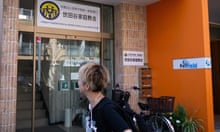
Japan asks court to strip Unification church of religious status
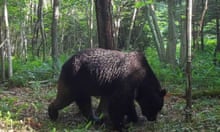
Three bears that holed up in factory in Japan are captured and killed
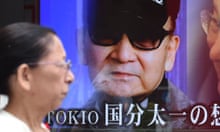
J-pop agency Johnny & Associates to change name amid sexual abuse scandal
Most viewed.
Japan Travel Restrictions
Traveler's COVID-19 vaccination status
Traveling from the United States to Japan
Open for vaccinated visitors
COVID-19 testing
Not required
Not required for vaccinated visitors
Restaurants
Recommended in public spaces.
Japan entry details and exceptions
Documents & additional resources, ready to travel, find flights to japan, find stays in japan, explore more countries on travel restrictions map, destinations you can travel to now, dominican republic, netherlands, philippines, puerto rico, switzerland, united arab emirates, united kingdom, know when to go.
Sign up for email alerts as countries begin to open - choose the destinations you're interested in so you're in the know.
Can I travel to Japan from the United States?
Most visitors from the United States, regardless of vaccination status, can enter Japan.
Can I travel to Japan if I am vaccinated?
Fully vaccinated visitors from the United States can enter Japan without restrictions.
Can I travel to Japan without being vaccinated?
Unvaccinated visitors from the United States can enter Japan without restrictions.
Do I need a COVID test to enter Japan?
Visitors from the United States are not required to present a negative COVID-19 PCR test or antigen result upon entering Japan.
Can I travel to Japan without quarantine?
Travelers from the United States are not required to quarantine.
Do I need to wear a mask in Japan?
Mask usage in Japan is recommended in public spaces.
Are the restaurants and bars open in Japan?
Restaurants in Japan are open. Bars in Japan are .
- About Japan
Visiting Japan
- Information Related to COVID-19 - JapanGov
- Border enforcement measures to prevent the spread of novel coronavirus (COVID-19) - Ministry of Foreign Affairs of Japan
- TeCOT (COVID-19 Testing Center for Overseas Travelers) - Ministry of Economy, Trade and Industry
- Vaccination Certificate for Overseas Travel - Ministry of Health, Labour and Welfare
- Novel Coronavirus (COVID-19) - Ministry of Health, Labour and Welfare
- Coronavirus (COVID-19) advisory information - Japan National Tourism Organization
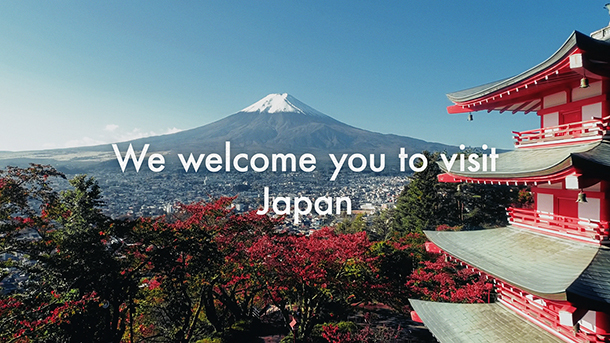
We welcome you to visit Japan
Empowering the Disabled
This movie introduces the new essential steps ahead of an unforgettable travel in Japan.
General Information
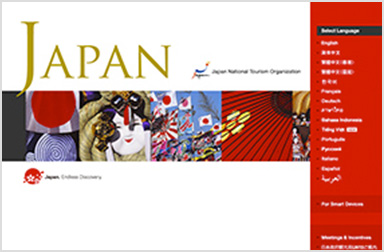
Japan: the Official Guide
Japan National Tourism Organization
General tourism information of Japan in multi languages. Climate, Healthcare, Money, Visa, Emergency info, etc. WEB: http://www.jnto.go.jp/
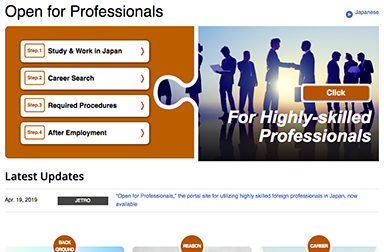
Open for Professionals
Japan External Trade Organization
The Government of Japan strongly welcomes highly-skilled foreign professionals. WEB: https://www.jetro.go.jp/en/hrportal/
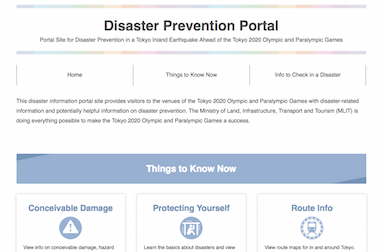
Disaster Prevention Portal
Ministry of Land, Infrastructure, Transport and Tourism
Portal Site for Disaster Prevention in a Tokyo Inland Earthquake Ahead of the Tokyo 2020 Olympic and Paralympic Games. WEB: http://www.mlit.go.jp/en/
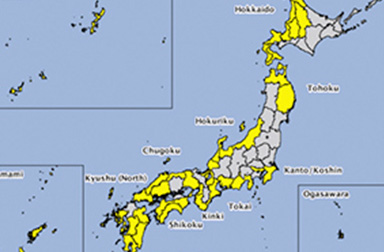
Safety Tips
Safety tips is an app to push notify the disaster information of Japan. Download the app from the website as follow; WEB: http://www.jnto.go.jp/safety-tips/
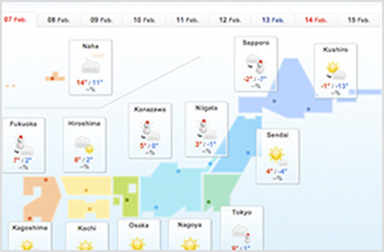
Japan Weather Forecast for Travelers
Weather forecast in English for travelers. WEB: http://www.jnto.go.jp/weather/eng/index.php
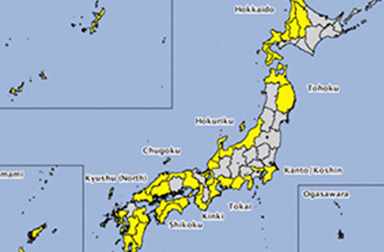
Japan Meteorological Agency
WEB: http://www.jma.go.jp/jma/indexe.html
Embassies, Visas, Customs and other Tourism Related Information
- Japanese Embassies, Consulates and Permanent Missions Overseas [Ministry of Foreign Affairs]
- Visas – Guide to Japanese Visas – [Ministry of Foreign Affairs]
- Customs – Procedures of Passenger Clearance – [Japan Customs]
- The Working Holiday Programmes in Japan [Ministry of Foreign Affairs]
- Animal Quarantine [Ministry of Agriculture, Forestry and Fisheries]
- Plant Protection Station [Ministry of Agriculture, Forestry and Fisheries]
Studying and Teaching
- Study in Japan Comprehensive Guide [Ministry of Foreign Affairs]
- Gateway to study in Japan [Japan Student Services Organization]
- Erin's Challenge! I can speak Japanese [The Japan Foundation]
- Marugoto: Japanese Language and Culture [The Japan Foundation]
- Portal Site on Policies for Foreign Residents [Cabinet Office]
- The Japan Exchange and Teaching Programme (JET)
Security Alert May 17, 2024
Worldwide caution, update may 10, 2024, information for u.s. citizens in the middle east.
- Travel Advisories |
- Contact Us |
- MyTravelGov |
Find U.S. Embassies & Consulates
Travel.state.gov, congressional liaison, special issuance agency, u.s. passports, international travel, intercountry adoption, international parental child abduction, records and authentications, popular links, travel advisories, mytravelgov, stay connected, legal resources, legal information, info for u.s. law enforcement, replace or certify documents.
Share this page:
Japan Travel Advisory
Travel advisory january 8, 2024, japan - level 1: exercise normal precautions.
Japan – Level 1: Exercise Normal Precautions
Reissued after periodic review without changes.
Exercise normal precautions in Japan.
Read the country information page for additional information on travel to Japan.
If you decide to travel to Japan:
- Enroll in the Smart Traveler Enrollment Program (STEP) to receive Alerts and make it easier to locate you in an emergency.
- Follow the Department of State on Facebook and Twitter .
- Follow Embassy Tokyo’s American Citizen Services section on Facebook and Twitter .
- Review the Country Security Report for Japan.
- Visit the CDC page for the latest Travel Health Information related to your travel.
- Prepare a contingency plan for emergency situations. Review the Traveler’s Checklist .
Travel Advisory Levels
Assistance for u.s. citizens, search for travel advisories, external link.
You are about to leave travel.state.gov for an external website that is not maintained by the U.S. Department of State.
Links to external websites are provided as a convenience and should not be construed as an endorsement by the U.S. Department of State of the views or products contained therein. If you wish to remain on travel.state.gov, click the "cancel" message.
You are about to visit:
Cookies on GOV.UK
We use some essential cookies to make this website work.
We’d like to set additional cookies to understand how you use GOV.UK, remember your settings and improve government services.
We also use cookies set by other sites to help us deliver content from their services.
You have accepted additional cookies. You can change your cookie settings at any time.
You have rejected additional cookies. You can change your cookie settings at any time.
Register to vote Register by 18 June to vote in the General Election on 4 July.
- Passports, travel and living abroad
- Travel abroad
- Foreign travel advice
Entry requirements
This advice reflects the UK government’s understanding of current rules for people travelling on a full ‘British citizen’ passport from the UK, for the most common types of travel.
The authorities in Japan set and enforce entry rules. If you’re not sure how these requirements apply to you, contact the Japanese Embassy in the UK .
COVID-19 rules
There are no COVID-19 testing or vaccination requirements for travellers entering Japan.
Travel in Japan
There are no official COVID-19 restrictions on travel, dining out or other activities. However, the Japanese government still recommends social distancing, mask wearing and other basic precautions. Public compliance with these recommendations is high.
Passport validity requirements
If you’re visiting Japan, your passport must be valid for the length of your stay. No additional period of validity is required.
Check with your travel provider that your passport and other travel documents meet requirements. Renew your passport if you need to.
You will be denied entry if you do not have a valid travel document or try to use a passport that has been reported lost or stolen.
Visa requirements
If you have a ‘British citizen’ passport, you can travel to Japan for tourism or business for up to 90 days. You will get a visa in your passport on arrival, and you do not need to apply before you travel. The Japanese immigration authorities may extend your visa by another 90 days at their discretion. You will need to apply for an extension.
If you have another type of British passport, you must get a visa.
To stay longer (to work or study, for or for other reasons), you must meet the Japanese government’s entry requirements. Check which type of visa or work permit you need with the Japanese Embassy in the UK .
It is illegal to work in Japan without the correct visa however informal or temporary the work.
If you overstay your permission to remain in Japan, you risk arrest, detention and a heavy fine.
For residency information, see the Japanese Immigration Services Agency website and living in Japan .
Vaccination requirements
At least 8 weeks before your trip, check the vaccinations and certificates you need in TravelHealthPro’s Japan guide .
Customs rules
There are strict rules about goods you can take into or out of Japan . You must declare anything that may be prohibited or subject to tax or duty.
It is illegal to bring meat products (including sausages, bacon and ham) to Japan without permission from the Japanese Animal Quarantine Service . Penalties include a heavy fine and prison sentence.
Whale meat is available in Japan but importing it into the UK and EU is illegal. If you import whale meat to the UK, you can get a fine of up to £5,000 and a prison sentence. Customs officers will seize the meat.
Taking money into Japan
People mainly use cash in Japan.
You may have difficulty using credit and debit cards issued outside Japan. Cirrus, Maestro, Link and Delta cash cards are not widely accepted. Japanese post offices, 7-Eleven stores and JP Post Bank have cash machines that will accept some foreign cards during business hours.
Check with your bank before travelling and take alternative sources of money.
Related content
Is this page useful.
- Yes this page is useful
- No this page is not useful
Help us improve GOV.UK
Don’t include personal or financial information like your National Insurance number or credit card details.
To help us improve GOV.UK, we’d like to know more about your visit today. Please fill in this survey (opens in a new tab) .

Japan travel requirements 2024: What travelers need to know
We aim to keep this post updated about Japan travel in 2024 with official Japan travel restrictions, requirements, and health and safety guidance. Our goal is to help you make informed decisions so you can travel confidently, safely, and responsibly in this new post-pandemic world of ours.
Since travel restrictions can vary by citizenship, we will be focusing our post on rules that affect U.S. citizens.
Last update: April 6, 2024. Originally published: July 2022.
Disclosure: This post contains some affiliate links. If you make a purchase through one of our links, we may receive a small commission, at no additional cost to you.
* Get our free Post-Pandemic Travel Checklist *
April 2024: “Tourism is really popular in Japan these days, and crowds can be difficult to avoid. T here are no more travel restrictions for Japan, so it’s a much simpler arrival process than last year. However, we still highly recommend filling out the Immigration and Customs form online for quicker arrival (see instructions below). We showed our passports and QR code at immigration and customs, did fingerprints, and had no questions asked. Wifi in both Tokyo airports can be frustratingly slow, so it’s important to screenshot/download the QR code before departure so you can access it offline. Just as it was pre-Covid, there is a percentage of Japanese people who wear masks out and about in public.” – Michelle & Jedd, Intentional Travelers
At the end of the post, we share more on-the-ground perspectives from local residents and travelers to Japan so you can get a sense of what it’s really like.
Table of Contents
Is Japan open for travel? Can I travel to Japan right now?
As of October 2022 , Japan is open for tourism for independent travelers. Visa-free travel for selected countries, including the US, has been resumed.
Tourists with U.S. passports can stay in Japan visa-free for up to three months. Find details and rules for entering Japan from other countries here .
Japan travel restrictions have been eased but travelers are asked to follow guidelines with regard to masks, social distancing, dining etiquette, and more.
As of April 2023 , a proof of vaccination or a negative Covid-19 test are no longer required for all travelers arriving in Japan.
To facilitate the arrival process, it’s highly recommended to submit your information online through Visit Japan Web before travel.
Steps for Traveling to Japan: What to Know (2024)
For a smoother arrival, travelers to Japan can pre-register for airport Immigration and Customs to receive the QR codes used for “Fast Track” at major airports across Japan.
We completed the Japan entry process in late March 2023 and again in early April 2024. It was admittedly a bit confusing, so I thought I’d share our experience and tips, as the process is still the same (apart from step 2).
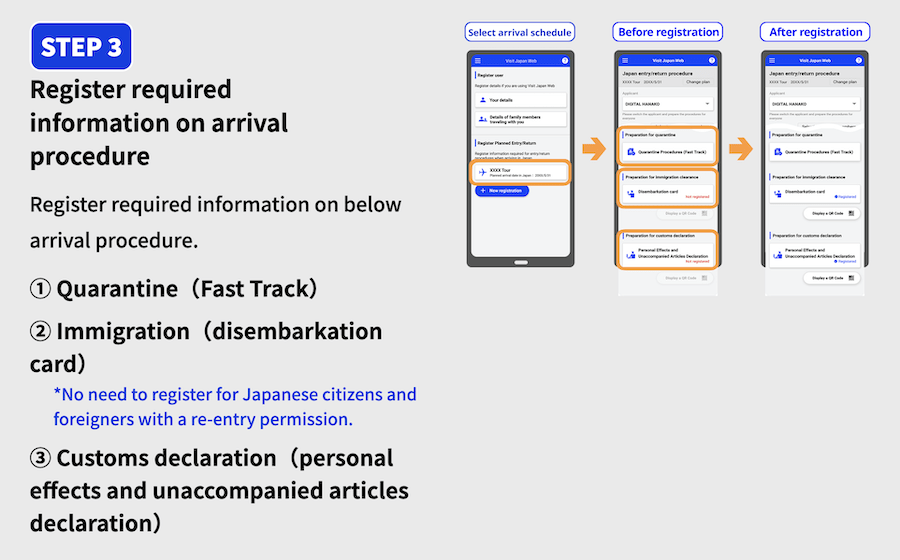
1. Register at Visit Japan Web
While the Fast Track/Quarantine procedures are no longer mandatory to complete in advance, I was glad I followed advice to pre-register through the Visit Japan Web site.
The latest they say you can register is at least 6 hours ahead of your flight to Japan .
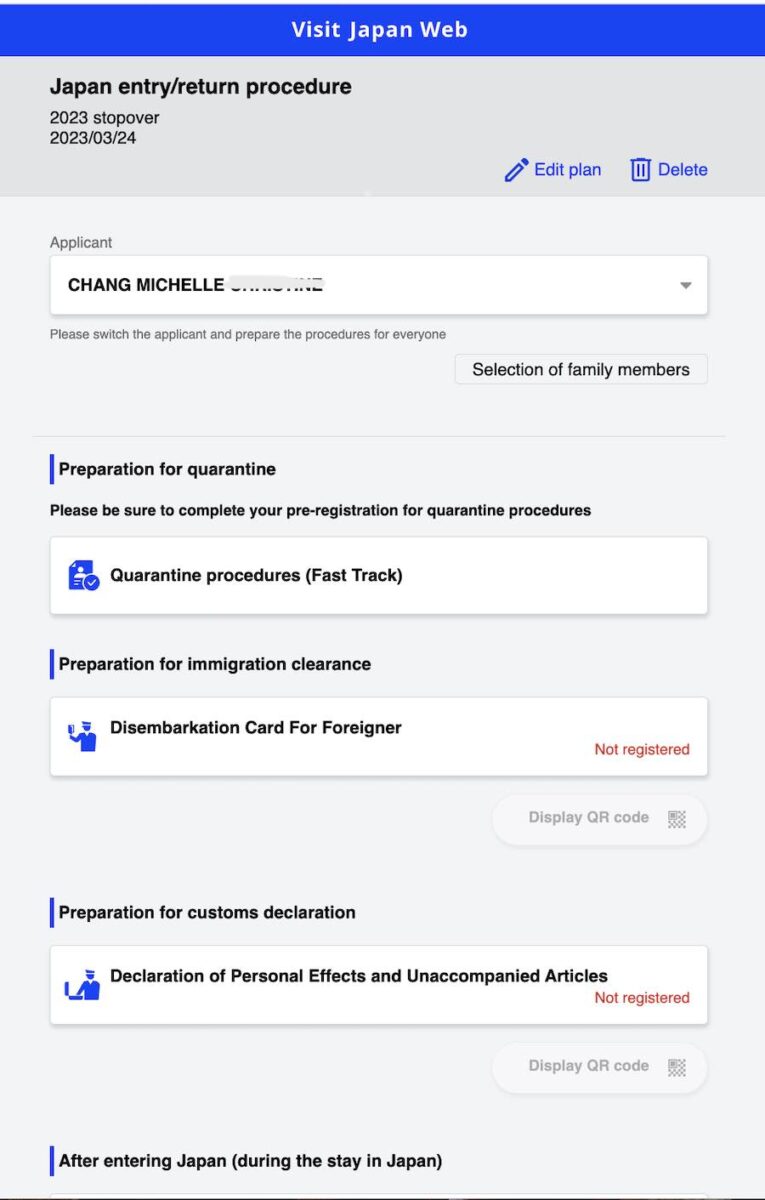
2. Submit your Covid documents in advance – NO LONGER REQUIRED
3. Register for immigration QR code
Returning to the main registration dashboard on the website, select the next module “Disembarkation Card for Foreginer,” which says it’s required for landing in Japan.
Some details pre-populated from from my profile. I selected Tourism for purpose of visit. Then there are three ways to report length of stay: year, month, day; as well as a few questions about any criminal background in Japan.
Once completed, a button “Display QR code” appears below the appropriate section.
Take a screenshot of the Immigration QR code and save it to your phone . It will have a yellow line above it.
If you don’t have the QR code , there are immigration cards available to fill out at standing desks located before entering the lines. Some people got all the way up to the immigration agent and were asked to step aside to fill out a card, which are also available next to each immigration stall.
The immigration line at Narita moved steadily but took about 25 minutes since several flights had arrived at once.
When I showed the QR code, the immigration officer simply took a headshot picture and fingerprint scans, then stuck a “landing permission” stamp in my passport for 90 days. No questions asked.
4. Register for Customs QR code
Returning again to the main dashboard, finally select “Preparation for customs declaration.” This registration allows travelers to go through an electronic declaration gate, which wasn’t super clear once we were at the airport.
I entered my flight origination (Hanoi) and number of family members with me (1). Then there’s the usual customs questions – type of goods, prohibited items, monetary funds, alcohol, cigarettes, souvenirs over 200,000y.
Again, take a screenshot of the Customs QR code and save it to your phone . It will have a blue line above it.
At Narita, the customs line for QR codes are labeled “electronic declaration” in blue. There are also kiosks that allow QR code, card, and duty free, as well as those that are for physical customs card only. The lines weren’t too long so it didn’t matter much which line we chose.
The customs officer had us scan our QR code and we could see our entered data displayed on an over-sized tablet-like device at the desk. No questions asked, we proceeded to exit the airport.
5. Sign up for travel insurance
It’s recommended to obtain insurance to cover medical costs related to COVID-19 in Japan. For travel insurance that covers Covid, we use Nomad Insurance by Safety Wing.
Quarantine rules in Japan: What happens if I get Covid?
Travelers are not required to quarantine upon arrival in Japan, provided that they are not suspected of having Covid-19. See details here .
Residents report that quarantine rules for testing positive may no longer be enforced anymore.
Previously, foreign tourists who tested positive for Covid while in Japan had to contact a local consultation center . A 7-10 days quarantine at a government-designated accommodation facility was required with all costs covered by the visitor.
The quarantine period could end within 7-10 days depending on the symptoms and/or negative COVID-19 test result. See details here .
Can I travel to Japan in June? Can I travel to Japan this Summer?
Travel to Japan in June is open . See details above and check back for updates.
Is it safe to fly to NRT Narita or HND Haneda International Airport ? Health screenings and body temperature checks are no longer in place at the airport. Wearing of masks is no longer required on flights or in the airports, though masking is still widely practiced.
Stringent cleaning and seating limits are implemented.
What is it like to fly to Japan right now? All Nippon Airways reports that masks are now optional. Additional procedures are in place at Immigration – please see details above.
Do Americans have to quarantine when traveling to Japan? No . See quarantine details above.
Does Japan check COVID-19 symptoms of incoming travelers? Health screening procedures such as temperature checks and simple symptom questionnaires are typically not in place at ports of entry anymore.
Does Japan require a negative Covid 19 test for travelers? A negative test is no longer required to enter Japan as of April 2023.
Does Japan require a proof of Coronavirus vaccine for travelers? A proof of Coronavirus vaccine is no longer required to enter Japan as of April 2023.
Do I still need to provide a negative Covid test or quarantine if I have been vaccinated? No. A negative Covid test, quarantine, or proof of vaccination are no longer required to enter Japan.
Is a booster shot required for travel to Japan? No. A booster shot is no longer required to enter Japan.
What Covid testing options are available for travelers? PCR and/or antigen tests are available for travelers in Japan. Travelers should contact the local consultation center to determine the location of testing facilities within Japan. A non-comprehensive list of some COVID-19 testing facilities can be found here .
Test results are available within 24 to 72 hours but many labs can return results in a matter of hours. PCR test costs vary from ¥2,500 to ¥16,500.
What healthcare options are available to travelers in Japan who get the virus? Japan hospitals and clinics are open. Foreign visitors are required to secure a medical insurance which that will cover medical costs in case they contract COVID-19 in Japan.
For travel insurance that covers Covid, check out Nomad Insurance by Safety Wing >
What service businesses and restaurants are open in Japan ? Businesses and restaurants in Japan are open. Some businesses may require their own mask rules or capacity limits.
What public gatherings are allowed in Japan? Public gatherings are allowed in Japan subject to safety guidelines.
Are face masks required in Japan? As of March 2023, wearing of face masks in Japan is recommended but no longer required.
Face masks are almost universally worn in public, especially in urban areas, indoors and on public transportation. The Consulate website states that failure to adhere to mask-wearing norms reflects poorly on foreign visitors.
Are buses running in Japan? Trains, buses and taxis are running as usual in Japan.
How has the Coronavirus impacted Japan?
Japan managed impressively well compared to most countries in the early days of the pandemic. Although Japan has been previously in a State of Emergency, the lockdowns were less disruptive on Japanese daily life.
However, Japan’s inbound tourism business lay dormant for years. Japan finally began easing restrictions in 2022 and reopened to travelers in June with strict entry requirements.
Japan finally eased entry requirements for travelers in October 2022 making it easier for travelers to visit the country. Visa-free travel has also been resumed for select countries.
Vaccination in Japan started later than some other countries. Around 80% of the population has been vaccinated and 64% had received a booster shot.
Tourism is now back with record numbers of visitors, however, staffing shortages have not fully recovered.
For the current situation in Japan, including: total COVID-19 positive cases; total cases in Japan; and COVID-19 testing in Japan, please see the Japan Ministry of Health site .

What should you pack for safely traveling in Japan?
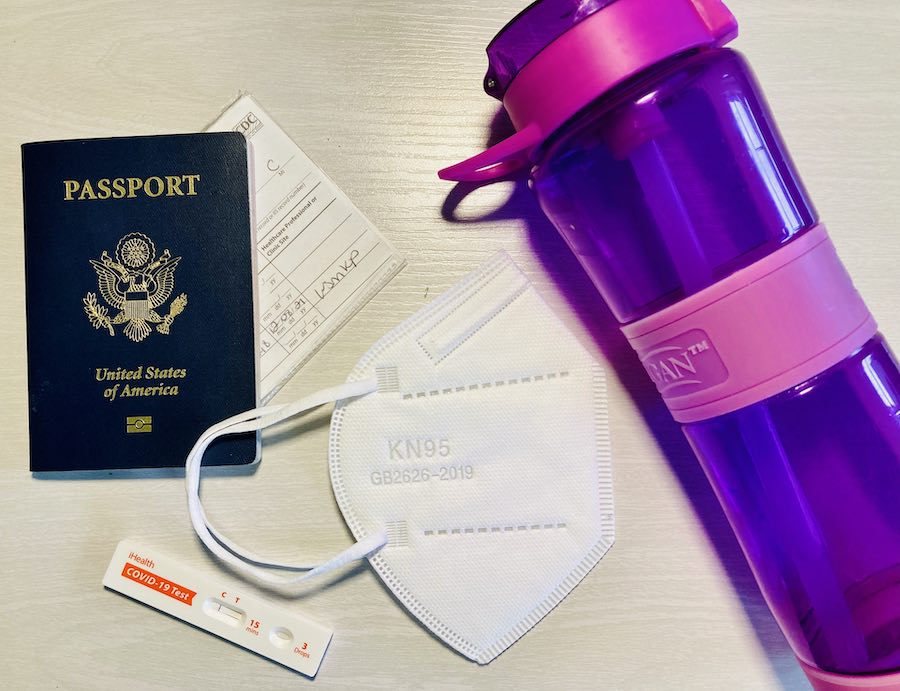
😷 Face Masks -Face coverings are recommended and widely used in public places. Find N95 masks at Bona Fide > or designer options at Vida >
💊 Medicine – Bring enough prescription and over-the-counter medication for your entire trip to avoid trips to the clinic.
💳 Vaccine Card Holder – Protect that paper CDC card when traveling abroad (if your country doesn’t offer a digital version). Get a simple plastic protector > or Vegan leather clippable > or Leather passport + card combo holder >
👃 Covid self-test – The most studied rapid antigen self-test with FDA emergency authorization. NOT valid to enter countries. Use for your own peace of mind. Order from CVS > or Walmart >
💧 Sealed water bottle – Make sure your reusable water bottle has a lid that’s not exposed to the air. We use one of each of the following: Shop insulated water bottles with protective lid > Shop water bottles with purification filter and protective lid >
✈️ Travel insurance that covers Covid – We’ve started using Nomad Insurance by Safety Wing for affordable evacuation, international medical, and trip coverage.
What do Japan locals and recent travelers say about visiting Japan now?
What is it like to visit Japan right now? It’s our goal to provide regular updates here from real people on the ground, to help potential visitors know what to expect. The following are subjective opinions only. Official travel guidance can be found above.
January 2024 – Brandon of Zimminaroundtheworld , expat living in Japan: “Japan is seeing an increase in tourism now that the country is open to visitors. Many visitors are traveling to Tokyo and Kyoto but some towns and cities like Nikko, Fukuoka, Hiroshima, and Naha are also seeing rises in tourism.
Currently there are no travel restrictions within Japan unless it is due to environmental catastrophes like the earthquake that occurred in Ishikawa Prefecture recently. Access to healthcare in Japan is easily available and affordable. Although foreigners can sometimes pay up to 200% more for healthcare it is still cheap.
Many attractions and famous sites around Japan especially in Kyoto and Tokyo are crowded with lines that are longer then expected. In general, restaurants in Japan are smaller and can only able to accommodate up to ten people or fewer and the space can feel cramped. Like anywhere else, keep an open mind and be flexible and there will be no problems while traveling around Japan.”
September 2023 – Jackie Szeto of Life of Doing , American traveler: “My husband and I traveled to Tokyo and Nikko, Japan for vacation in September 2023. Expect large crowds at major attractions, restaurants, and trains in major cities such as Tokyo and Kyoto. Visiting other destinations such as Nikko is a nice change of pace with fewer crowds, especially on the weekdays.
It’s recommended to complete the Immigration and Customs declaration on the Visit Japan Web to expedite arrival, but it’s not required. When landing at international airports, the QR codes for Immigration and Customs are still accepted. Otherwise, all COVID protocols have been dropped in the cities. Antibacterial hand sanitizer is still provided at entrances of hotels, restaurants, and shopping centers. Some people still wear masks in crowded areas and on trains, but most go mask-free.”
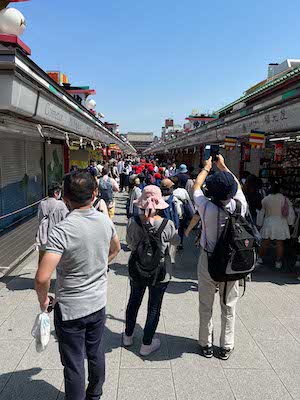
May 2023 – Sophie Pham of Delightful Travel Notes , traveler: “My husband and I were traveling in Japan for 11 days from May 11-21, 2023 for our vacation. I found that Japan had already welcomed visitors with open arms, free of earlier restrictions. The return of both domestic travelers and international tourists created a lively atmosphere, and crowds could be seen in a lot of places.
In May, it took us 45 minutes to clear immigration at Kansai International Airport after landing at around 7:45am.
All attractions and food venues were fully open, with no social distancing measures or mandatory mask rules, although some restaurant servers, locals, and taxi drivers still chose to wear masks. Some famous restaurants had long lines again, and popular attractions like Fushimi Inari, Kiyomizu-dera, and Senso-ji-ji could get crowded during the day. If there’s a particular popular restaurant you want to try, it may be best to make your dinner reservation in advance, especially for weekend. Overall, everything is lively again and we had a great time.”
March 2023 – Michelle, Intentional Travelers, American visitor: “We enjoyed a two day layover in Japan. The online procedures and QR codes were a bit confusing but I highly recommended doing them in advance of travel to make your arrival smoother.”
February 2023 – Joel, US traveler: “For the most part the Japanese are wearing masks. I’d say mask wearing is at about 99%. Despite the crowds in the city and packed trains and subways, it honestly feels way safer than generally any place in America where mask wearing is far from the majority. ANA enforces a mask wearing requirement whereas United is pretty much a free for all.
One key thing that is good to know is at the ticketing counter they need to know your return flight info when initially checking in. We had all the other Japan travel docs as far as the gov mandated requirements but this one kinda caught us off guard. The immigration line may seem staggering but it moves. ”
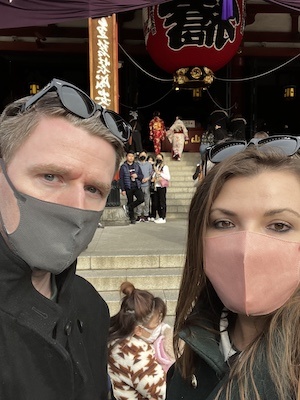
January 2023 – Lizzie of Wanderlust & Life , UK traveler: “I flew to Tokyo in January 2023 for 3 days as part of a stopover between Australia and the UK. For us it felt like the country is so happy to welcome tourists again. We were slightly worried about visiting or entry restrictions changing last minute but the airline kept us up to date and apart from filling out a lot of forms on arrival it felt quite normal being there.
As Japan only opened recently there weren’t as many tourists as we were expecting which was a plus really. We were made to feel so welcome in the country.
Masks are mandatory indoors and everyone seemed to be following this. The vast majority of people were also wearing masks outdoors too. Sanitiser is readily available in restaurants and tourist attractions. We didn’t encounter any contact tracing or even requests to show covid passes. The only frustration we had was that we flew JAL and we had to wear masks our whole flight which was about 14 hours in one go and this was enforced by cabin crew.”
November 2022 – Darryl H., New Zealand traveler: “My visit to Japan involved a return to the sort of measures that, in my home country of New Zealand, had been abandoned some time ago. The first action on arriving at Tokyo’s Narita Airport, with my mask firmly in place, was to allow officials to check and confirm I had complied with mandatory online registration of evidence of my vaccination status. Once this had been done, the arrivals process was pretty much standard.
During my 10-day stay, I experienced no restrictions on my movements or activities. The differences were in the roles of masks, sanitiser and – in some instances – distancing. The wearing of masks indoors and on public transport is close to one hundred percent, whether or not they are demanded. Outdoors, in most situations, they appear to be worn by at least 98 percent of people, although in some areas later in the evening there is an obvious relaxation in standards – especially among younger people. While most tourists appear happy to comply with the standards followed by locals, the proportion of non-mask use by non-Japanese is clearly larger than by Japanese. At no stage did I see any visitor reproached for this.
There is sanitiser on hand (pun intended) everywhere. It is probably accessed by about a third of people. There are many locals who are fastidious about sanitising.
While I observed no enforced distancing on public transport or in the street, it is definitely in place in cafes and other eateries. Most places I visited had plastic partitioning between patrons, and crosses to discourage the use of every second seat. Groups or couples are, of course, welcome to sit together.
The buffet breakfast in my hotel illustrates all three of the above differences. When I arrived at breakfast each morning, masked of course, the attendant ensured that I first sanitised my hands and then put on plastic gloves. Only then could I approach the serving implements and food. I would then sit on one of two seats (the second having a cross on it), both of which were partitioned off from the next pair of seats. Seats with another seat opposite were separated by another plastic partition. If I wanted to return to the buffet for more food, I first had to remask and re-glove. Once I forgot the gloves, and was politely turned back before I could touch the serving implements.
It is not uncommon for Japanese hospitality venues to give high priority to cleanliness, but there seems to be super-high priority now. Where in New Zealand I might expect a quick wipe over of a table between customers, in Tokyo it now appears to be a thorough and sometimes deep clean.
The precautions in no way reduced my pleasure in revisiting Tokyo. And they increased at least my perception of being protected.”
September 2022 – Jackson, American visitor: “Traveling to Japan reminded me of the COVID situation in Hawaii a year ago. People go about their day with a medical mask. Every store front has hand sanitizers and thermo cameras. COIVD testing and vaccination clinics are common place. Despite these COVID precautions, Japanese residents and businesses continue to welcome visitors with refreshing grace and hospitality. Japan’s omotenashi , beautiful scenery, and extraordinary delicacies are worth exploring and appreciating, but can tempt visitors into overlooking the uncertainty that underlines Japan. I hope visitors will take the time to learn about the challenges of the Japanese people and reciprocate Japan’s hospitality with a gracious thank you.”
Aug 21 2022 – Y., American Japanese dual citizen: “ I returned from visiting family in Japan two days ago. Travel is still tough. The plane was empty – only 20 passengers on a big airplane. My pre-travel Covid test was 10 minutes earlier than the required 72 hours so I was turned away at the airport. I scrambled to find a last minute PCR test with rapid results and rush back to the airport.”
August 2022 – Christine, American visitor: “Japan isn’t currently open to tourists. I was there for a school conference, and had to get a conference visa. One has to get a visa for Japan in advance and you can only get one with an EFRS form filled out from someone in Japan.
I had to have a negative PCR test from within 72 hours of departure time. There’s eased quarantine procedures, which depend on the countries you’ve been to in the previous 2 weeks. And you have to have the MySOS app on your phone because they might check up on you. It also expedites your entry because you can upload all the necessary forms/COVID test/questionnaire ahead of time.
Everyone wears a mask everywhere, and they’re available for cheap at convenience stores. Because I was on a university’s campus most of the time, I had to report my temperature and if I was having any symptoms to the University every day.”
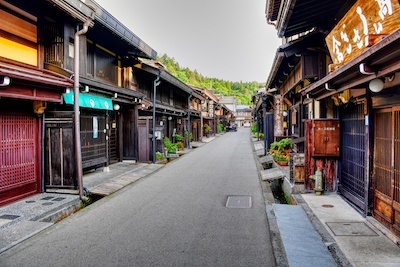
July 2022 – Brandon of https://zimminaroundtheworld.com , Expat in Japan: “Currently Japan is only doing guided tours for international tourism. Travel entry for normal tourism is not an option at the moment. I recently took a trip around central Japan and visited a variety of cities and saw hardly any tourists. It’s nice to get great photos of popular attractions without crowds of people in the photos. But at the same time, it is taking a toll on the economy. I’ve seen shops and restaurants struggle to survive here and locals begging for tourism to come back.
Masks have been worn in Japan even before Covid. To this day, the majority of the population wears masks and obeys the rules, this includes both foreigners and locals. I wear a mask when leaving my apartment and only take it off when social distancing can be achieved or while eating at a restaurant. The positive aspect about Covid is that there are no long lines to enter attractions or eating establishments. I feel public transportation is safe here as the Japanese are very good and sanitizing everything.”
Planning a trip to Japan?
Check out our other Japan travel resources: – Great Things To Do Around Iwakuni, Japan
If you have questions or updates about travel to Japan during the Coronavirus crisis or post-pandemic, please let us know in the comments below.
~ Pin this post for later or share with friends ~
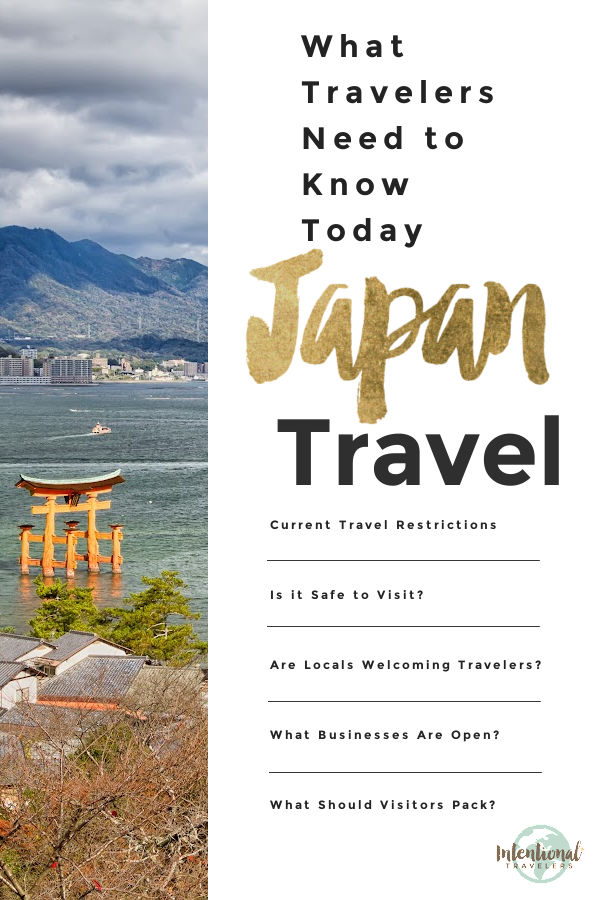
Disclaimer: Please note, travel restrictions change frequently. Readers must take responsibility for verifying information through official sources like the State Department and CDC, in respect to their specific situations. No responsibility can be accepted by Intentional Travelers for action or inaction as a result of information provided through IntentionalTravelers.com. Any information provided here is issued as general information only.
Similar Posts
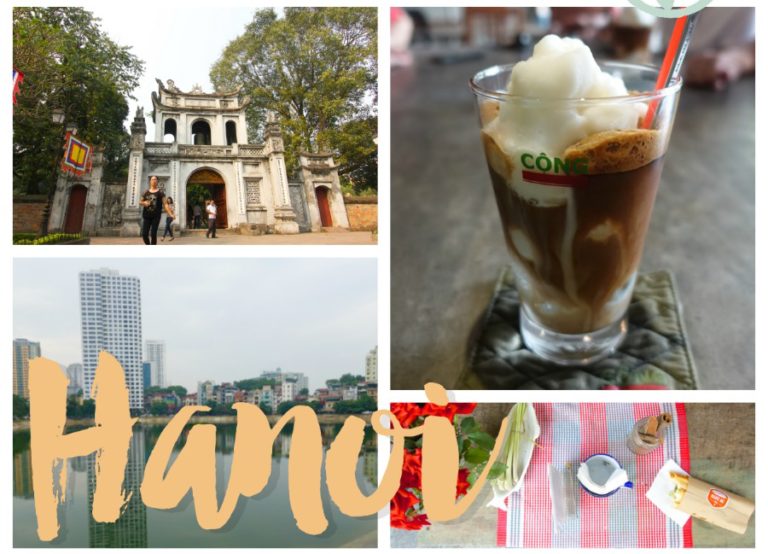
Things to Do in Hanoi, Vietnam on a Budget
Vietnam’s capital, Hanoi, is a bustling city in the North with a lot to explore. Cost of living is fairly cheap so there are many things to do in Hanoi on a budget. Despite not loving big cities and traffic, we have really enjoyed our many visits to Hanoi. Initially we stayed with expat friends…

Ecuador travel requirements 2024: What travelers need to know
We aim to keep this post updated about Ecuador travel in 2024 with official Ecuador travel restrictions, requirements, and health and safety guidance. Our goal is to help you make informed decisions so you can travel confidently, safely, and responsibly in this new post-pandemic world of ours. We stayed in Cuenca, Ecuador in 2022 and…

How To Travel On Just $15 A Day
This is a post by our fellow intentional traveler, Lianne Bronzo, who has spent several years living, teaching, volunteering, and traveling in Asia and Australia. She blogs at LianneBronzo.com and AdamandLianne.com. We are delighted that Lianne shared her budget info and responsible travel outlook with us! One of the most common questions…

Tips for Travel in Bangkok
If you have been backpacking Southeast Asia and need some time to refresh in a city, or you are traveling to Bangkok for work, here are some helpful Bangkok travel tips and recommendations. This post on budget travel tips for Bangkok was originally written by our friend and fellow intentional traveler, Karen Bortvedt, while she…
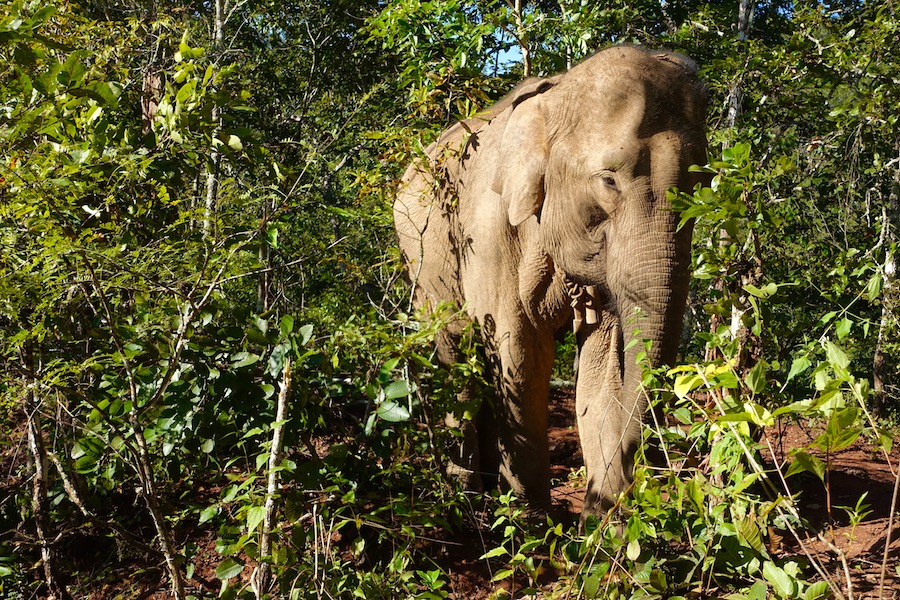
How to Choose an Ethical Elephant Sanctuary
Visiting elephants is often at the top of travelers’ lists when visiting Southeast Asia. Elephant tourism has the potential to promote a greater appreciation for these giant creatures and influence their preservation. Unfortunately, not all elephant tours are created equal. Why the Cool Kids Are No Longer Riding Elephants With the high demand for elephant…

Croatia travel requirements 2024: What travelers need to know
We aim to keep this post updated about Croatia travel in 2024 with official Croatia travel restrictions, requirements, and health and safety guidance. Our goal is to help you make informed decisions so you can travel confidently, safely, and responsibly in this new post-pandemic world of ours. We lived and worked from Croatia in winter…
Hi Great article ! I noticed you have been vaccinated once with JJ (same here) . You mentioned the requirements for boosters but it sounds like you haven’t had a booster? I tried to sort through the link page but couldn’t find any further info. So my question is I’m planning to travel after May 8th with 1 JJ vaccination, I’m Canadian, but will be coming from Indonesia. Thanks for any insight you might have
Hi and thanks for visiting our blog. While we had the single JJ vaccination, we also had boosters. I mentioned it because the Japan entry form allows you to essentially count JJ as two shots out of the three that are required. In other words, at least one booster is currently required for entry to Japan. That said, vaccine documentation will no longer be required after May 8 so you shouldn’t have to worry about it.
I am travelling to the US from Australia via Japan in September. I fly with JAL, from Melbourne (MEL) arriving at Haneda International Airport (HND), but need to fly out of Narita International Airport (NRT) to New York (JFK).
I would like to know if I will be allowed to travel, via Japan, in September.
Australia is in Blue Category and I have had 3rd dose of Covid vaccination.
I look forward to your reply soon.
Thank you for your question. Unfortunately, it’s difficult to say what will be possible in September, as we do expect the rules to change over time. Currently, foreign travelers are limited to package tours and may not use public transit. To find out if any exceptions can be made for transit between airports, you can try the Japan visitor hotline .
Leave a Reply Cancel reply
Your email address will not be published. Required fields are marked *
This site uses Akismet to reduce spam. Learn how your comment data is processed .
Search form
To avoid infection spread, how long a quarantine is sufficient it depends.

(Illustration by Michael S. Helfenbein)
In December 2022, China lifted the stringent COVID-19 restrictions it had imposed early in the pandemic, and infections throughout the country rapidly increased. In response, some countries restricted travelers from China in an effort to prevent increases in their own infection rates.
But a new Yale study finds that such strict border controls may not have been necessary for many countries.
For the study, published in the International Journal of Infectious Diseases , researchers used national demographics from more than a dozen nations, COVID-19 infection rates, and travel data to determine how many days of quarantine would have been necessary to keep a country’s infection rates at the same level they would experience under total border closure.
They found that the optimal quarantine lengths varied significantly from country to country, with some requiring just a few days and others benefitting from complete border closure.
“ The idea behind quarantine is to keep a disease from entering your country,” said Jeffrey Townsend , the Elihu Professor of Biostatistics at Yale School of Public Health and senior author of the study. “And it’s incredibly effective when used that way. But during the COVID-19 pandemic, quarantines were being used by countries that already had infection spread. That makes its effectiveness more complicated. It’s worth knowing how to best apply quarantine so you don’t unnecessarily overuse resources to implement it.”
Consider the unlikely scenario in which two countries have the same populations, rates of infection and immunity, and number of travelers between each other. In that case, both countries would, on average, bring in the same number of infected travelers as they sent out, and their internal infections would remain largely unaffected by international travel between the two nations, Townsend explained.
In reality, those factors wouldn’t be the same between two countries, said Townsend. The approach developed by the researchers uses the real-world numbers for those factors to determine the minimum amount of quarantine time necessary to keep international travel from increasing a country’s COVID-19 infection rates in any meaningful way.
The study calculated quarantine lengths that were sufficient to prevent additional new COVID-19 infections caused by international travelers between China and 12 other countries from Feb. 13 through Feb. 19, 2023.
Scotland was among the countries that would have benefitted from shorter quarantine times — three days — driven largely by Scotland’s small number of daily travelers from China (226 people).
On the other hand, countries with higher immunity and lower prevalence of COVID-19 in their populations — such as France — needed 13-day quarantines to prevent any increase in infections. A large number of infected people arriving from China would significantly add to the infection tally in a country where widespread immunity had lowered infection rates, researchers said.
Recommended days of quarantine to prevent increase in infections

At the most extreme ends were countries that needed no quarantine, such as Singapore, South Korea, and Japan. These countries already had high prevalence of COVID-19, meaning new infections would have little effect. Countries that needed complete border closure — including Vietnam and Thailand — had very low infection rates that would rise with an influx of infected travelers.
“The beauty of this model is its accessibility and broad generalizability in unique pandemic situations,” said Dinesh Bojja ’26, a student researcher in Townsend’s lab and lead author of the study. “Regardless of the location, virus, or stage of pandemic, policymakers can easily determine what level of quarantine to impose to protect their citizens — making it incredibly powerful as a preventative tool in future pandemic responses.”
This approach is most effective when countries provide accurate and timely data on infection rates, said the researchers. And the findings, they added, emphasize how evidence-based decision-making yields more effective policies that better benefit public health.
“ Pandemic responses are health decisions and cost decisions, and this approach identifies what actions are sufficient to achieve the best health protections,” said Townsend. “Public health and pandemic preparedness offices should have this model, which is available for them to use, at the ready to advise politicians on what to do.”
Health & Medicine
Media Contact
Fred Mamoun: [email protected] , 203-436-2643

2024 Environmental Performance Index offers surprise top ranking
This well-timed ‘chameleon’ sneaks up on drug-resistant brain cancers.
Yale scientists say KL-50, their lead “chameleon” compound, effectively targets tumors without harming healthy surrounding tissue.

More than meets the eye: Understanding how the brain controls social gaze

Improving quality of care for older adults
- Show More Articles
Watch CBS News
Japan town that blocked view of Mount Fuji already needs new barrier, as holes appear in mesh screen
May 30, 2024 / 9:03 AM EDT / CBS/AFP
Tokyo — A Japanese town will replace a barrier mounted to deter unruly tourists from taking photos of Mount Fuji after holes were poked in the mesh screen, the country's biggest national news agency and other outlets reported Thursday. The barrier was put up last week in a popular viewing spot in the town of Fujikawaguchiko, where residents had complained about streams of mostly foreign visitors littering, trespassing and breaking traffic rules.
But at least 10 small holes have already been spotted in the black netting, which is about eight feet high and 65 feet long, hung outside a convenience store behind which the mountain can be seen rising in the distance. The new barrier will be made of stronger material and possibly changed to a lighter color such as blue or green, national news agency Kyodo News and other Japanese media reported.

Mayor Hideyuki Watanabe told reporters he "hopes to change the barrier as soon as possible" before the summer holiday season, according to the Asahi Shimbun daily.
Speaking to CBS News partner network BBC News about the decision to erect the barrier in the first place, Kazuhiko Iwama, 65, who has his own view of Japan's iconic peak from his home, said tourists were routinely crossing the street in front of the convenience store, "and they don't seem to care about the cars at all. It is dangerous, and they leave trash and cigarette butts everywhere."
"I feel sad for those tourists who come all the way to see the view and take pictures, but traffic here is quite heavy, and we are all very concerned about accidents," another resident, 73-year-old Kikue Katsumata told the BBC.
The town started getting an influx of tourists as post- COVID pandemic travel increased and the Japanese yen weakened, making it much more affordable for people from other countries to vacation in Japan.

Record numbers of overseas tourists are now coming to Japan, where monthly visitors exceeded three million for the first time in March and then again in April. But as in other tourist hotspots, such as Venice which recently launched a trial of entry fees for day visitors, the influx has not been universally welcomed.
In Japan's ancient capital of Kyoto, locals have complained of tourists harassing the city's famed geisha.
Hikers using the most popular route to climb Mount Fuji this summer will be charged 2,000 yen ($13) each, with entries capped at 4,000 people to ease congestion.
- Mountain View
More from CBS News

Georgia's controversial "foreign agent" bill becomes law

Strangers rally to aid veteran pushing shopping carts

22 killed as bus carrying Hindu pilgrims plunges into a mountain gorge

At least 50 people have died in a week as record heat scorches India
- Agri-Commodities
- Asean Economic Community
- Banking & Finance
- Business Sense
- Entrepreneur
- Executive Views
- Export Unlimited
- Harvard Management Update
- Monday Morning
- Mutual Funds
- Stock Market Outlook
- The Integrity Initiative
- Editorial cartoon
- Design&Space
- Digital Life
- 360° Review
- Biodiversity
- Climate Change
- Environment
- Envoys & Expats
- Health & Fitness
- Mission: PHL
- Perspective
- Today in History
- Tony&Nick
- When I Was 25
- Wine & Dine
- Live & In Quarantine
- Bulletin Board
- Public Service
- The Broader Look
Today’s front page, Monday, June 3, 2024

Yuka Saso makes headlines in Japan as special edition papers mark her US Open win
- The Associated Press
- June 3, 2024
- 1 minute read
TOKYO — Commuters at Tokyo’s Shimbashi Station were greeted with a special edition of the Yomiuri newspaper on Monday.
The big news was the victory of Yuka Saso at the U.S. Open on Sunday, the second time she has won title. Japanese papers still print special editions to mark such moments.
She won in 2021 playing under the flag of the Philippines, the land of her birth. This time she won flying the flag of Japan, the birthplace of her father.
“Winning in 2021, I represented the Philippines. I feel like I was able to give back to my mom,” Saso said. “This year I was able to represent Japan, and I think I was able to give back to my dad. I’m very happy that I was able to do it.
“It’s just a wonderful feeling that I was able to give back to my parents in the same way.”
The 22-year-old Saso shot a 2-under 68 on Sunday — early Monday Japanese time — to win by three shots at the Lancaster Country Club in Lancaster, Pennsylvania.

3×3 Basketball in Paris Olympics: Storylines to follow, key matchups and more

Boxing in Paris Olympics: Fighters to watch, key dates and more
- BusinessMirror

Israeli siblings chase Olympic dream from Bay Area rivals Stanford, Cal

No solution yet for Grand Slam matches that go way past midnight

Porzingis on track for return to Celtics lineup

Swiatek serves up double bagel, gains French Open quarters

Real Madrid eyes Mbappe, 16th Champions League triumph

Biles looks ready to add second all-around Olympic gold to collection

75-year-old races to record 157th NHRA victory

Yuka Saso wins another US Women’s Open. This one was for Japan
- Doug Ferguson / The Associated Press

Carlo and Hergie are Paris-bound!
- Josef Ramos
- June 2, 2024

SBG ups support for Olympic bets

Carlo’s very determined for Paris–Tolentino

Coo bags silver in Asian BMX championships

Fresh challenges await pros as PGT heads to Lakewood in Nueva Ecija
Smoking dragon.
- Rick Olivares

FEU downs Arellano to take group lead in GVIL
Three-fil-ams beef up lyceum basketball team in ncaa.

Djokovic survives five-set scare in third round to keep French Open title defense alive
Input your search keywords and press Enter.
- Web Stories
- Travel Tips & Reviews
Why Japan Just Banned Tourists? A Fight For Culture, Crowd & Disrespect
Japan aims to manage over-tourism by limiting visitors at some popular attractions. Here's what you need to know.

- Updated - 2024-05-25, 19:23 IST
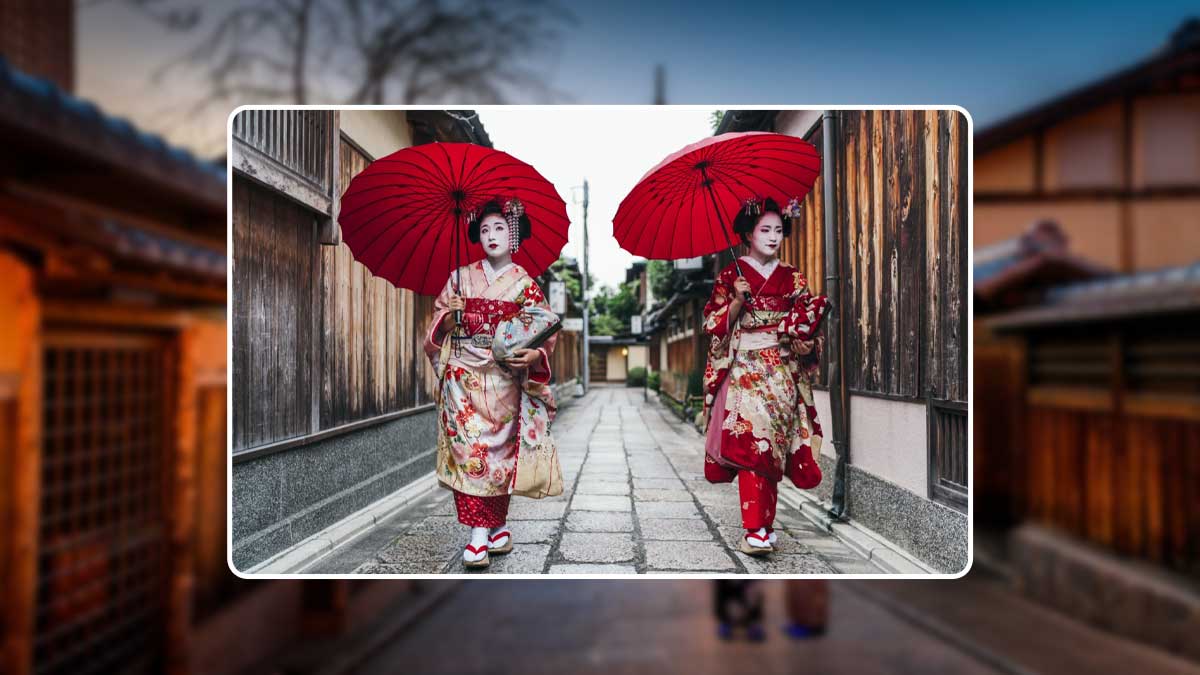
A video from Jiji Press shows the main tourist areas of Kyoto in May 5, 2020 vs. April 29, 2023. Back in 2020 foreign tourists were banned from entering Japan, domestic tourism was discouraged, and many shops voluntarily closed. All of that is over now. pic.twitter.com/R1PKNMFgVD — Jeffrey J. Hall 🇯🇵🇺🇸 (@mrjeffu) April 30, 2023
One of the reasons why Japan has been banning tourism in certain places pic.twitter.com/EmP5UWxhfm — non aesthetic things (@PicturesFoIder) May 23, 2024
Gion District's Struggle Preserving Geisha Heritage
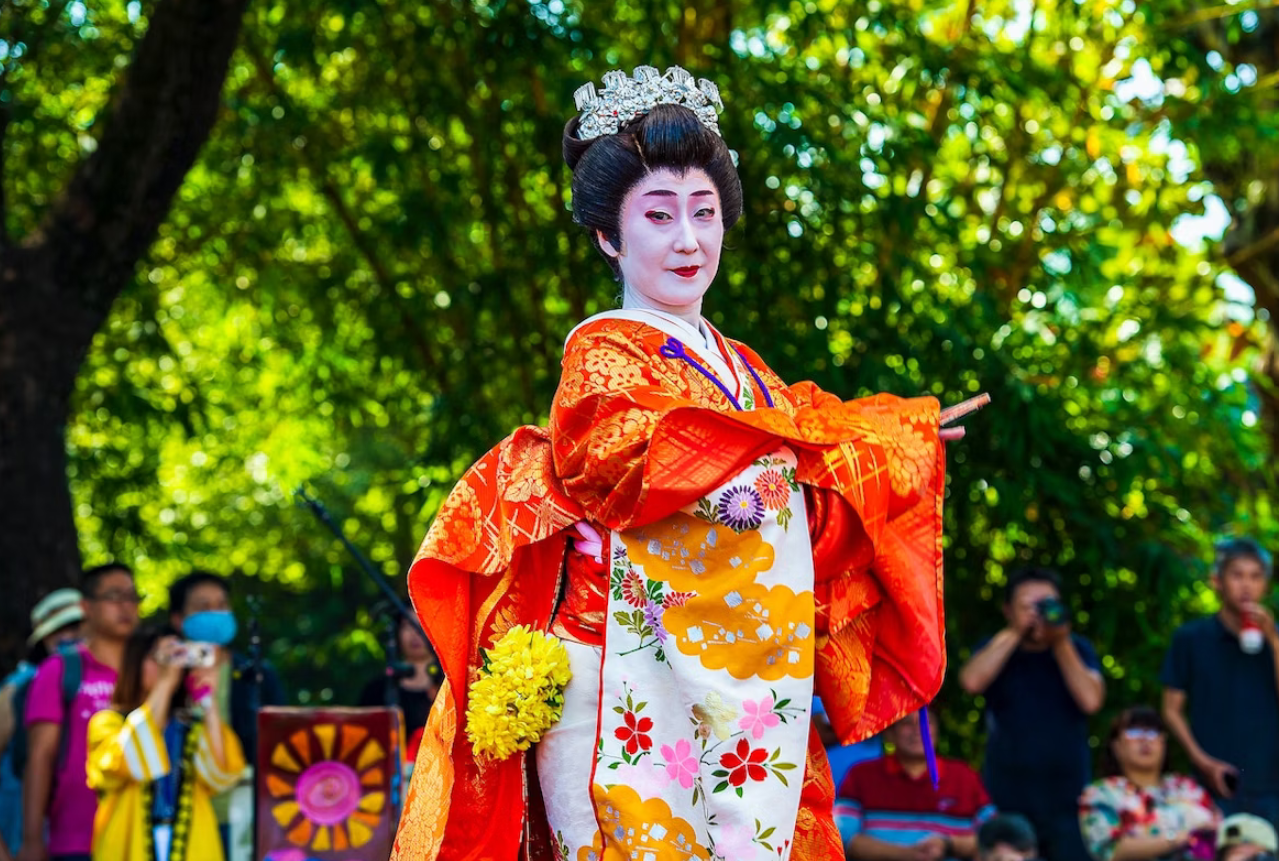
Mount Fuji's Iconic View Disrupted by Overtourism
VIDEO: Workers mount a mesh barrier to block a view of Mount Fuji in the Japanese town of Fujikawaguchiko, in an attempt to deter photo-taking by an ever-growing number of tourists. pic.twitter.com/nFRrUI79EE — AFP News Agency (@AFP) May 23, 2024
Japan’s New Tourism Policies To Combat Overtourism
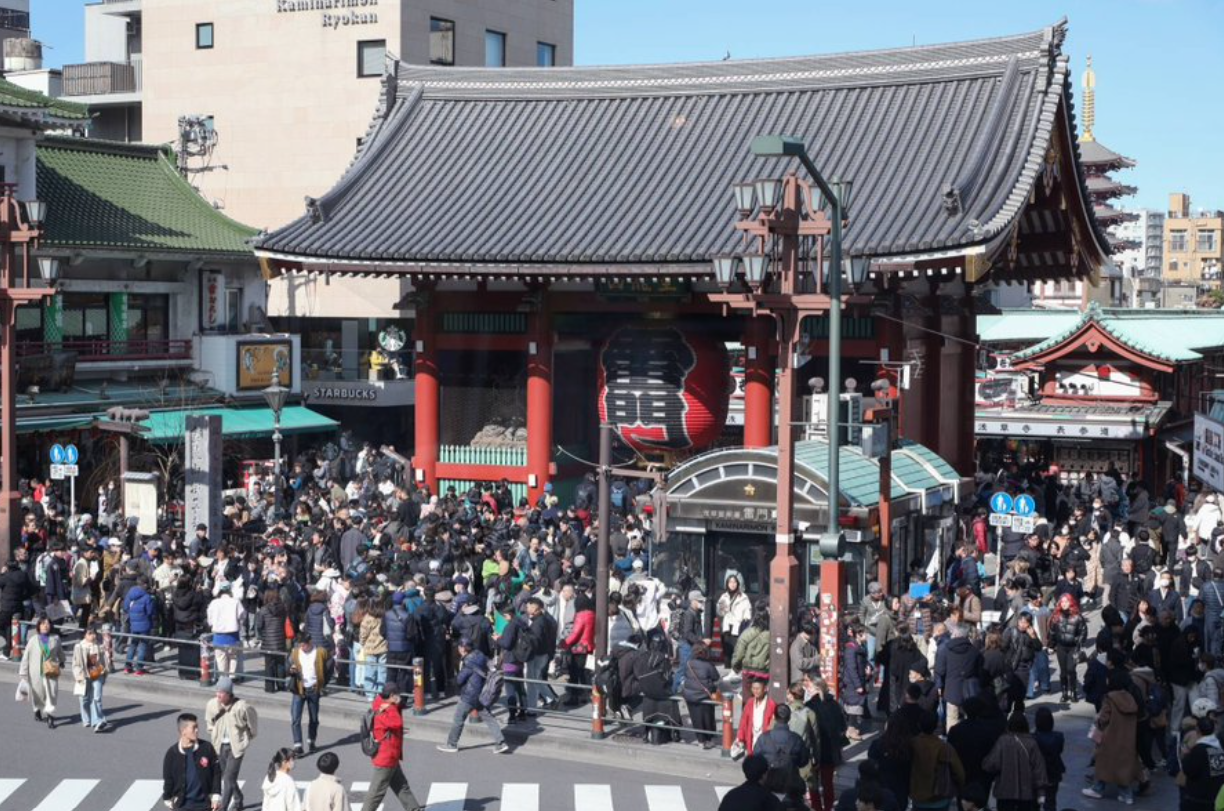
Japan Dealing With Overtourism
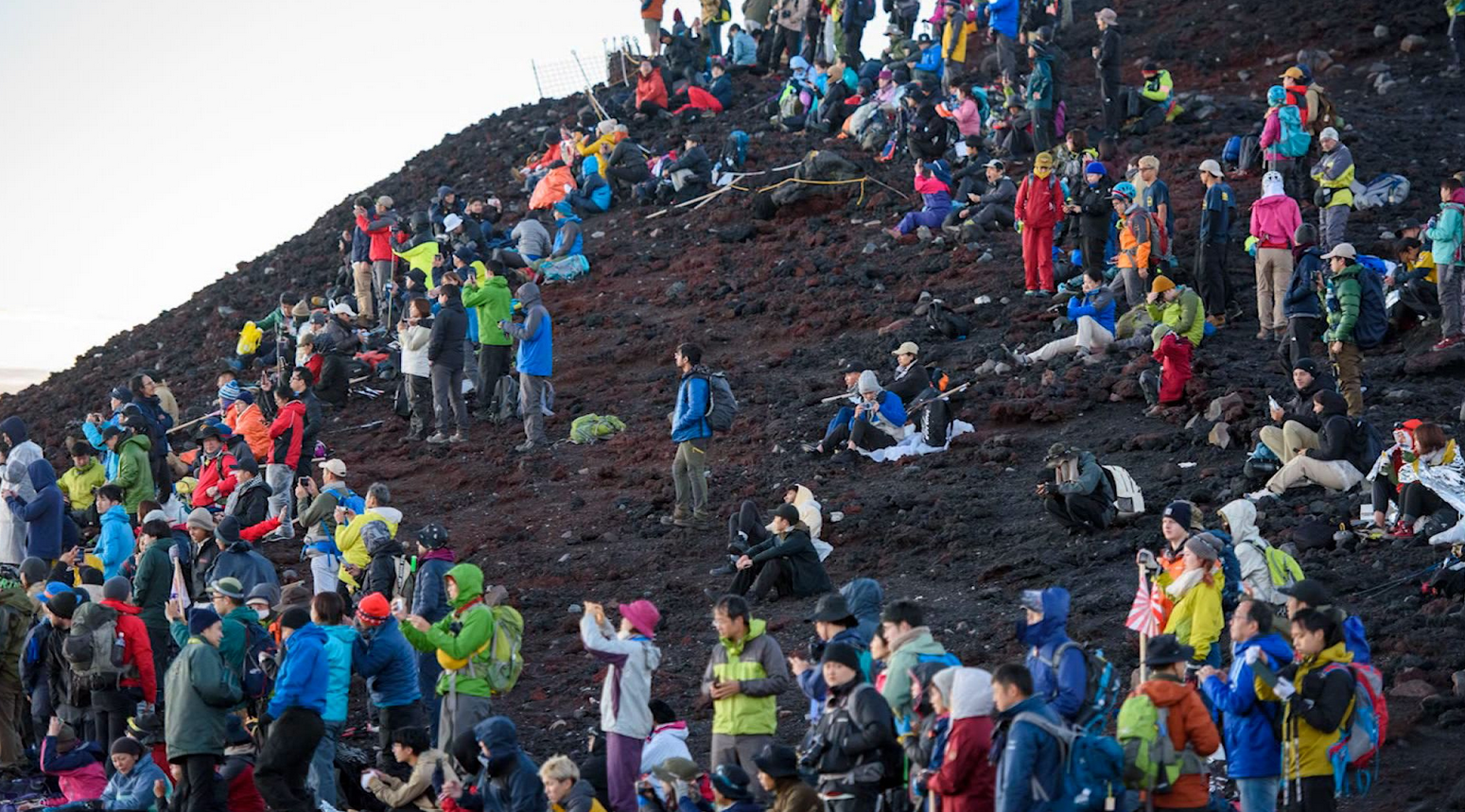
Don't Miss: English No Longer Mandatory For Class 11 & 12, Classified As 'Foreign Language' In Maharashtra For more such stories, stay tuned to HerZindagi Herzindagi.com is Jagran New Media's gender and lifestyle vertical, catering to women of all age groups, helping them remain updated, on-trend and aware. To improve our performance and understand our readers' interests better, we have created this poll. This will take 2 minutes of your time, do help us out with this link . Image Courtesy: X
Your skin and body like you are unique. While we have taken all measures to ensure that the information provided in this article and on our social media channels is credible and expert verified, we recommend you consult a doctor or your dermatologist before trying a home remedy, quick hack or exercise regime. For any feedback or complaint, reach out to us at [email protected]
Two dozen United Airlines passengers fell ill on flight, had been on cruise

Around two dozen passengers fell ill on a United Airlines flight from Vancouver, Canada to Houston, Texas on Friday.
Approximately 25 people traveling in a group of 75 had nausea, according to Capt. Sedrick Robinett of the Houston Fire Department. HFD evaluated three passengers upon the plane’s arrival at George Bush Intercontinental Airport but none were transported to the hospital, he said.
“Several passengers who had been on the same cruise and did not feel well were on United Flight 1528 from Vancouver to Houston Friday night,” United told USA TODAY in an emailed statement. The airline did not answer a question about what cruise line or ship the flyers had been traveling on before their flight.
“United Airlines is actively coordinating with health authorities to address the situation,” the airline’s statement continued. “As a precautionary measure, the aircraft will be removed from service and go through a deep cleaning before returning to service. Ensuring the health and safety of our passengers and crew remains our top priority.”
Is there a doctor on board?: Usually, yes. Here's why.
The Houston Health Department referred a request for comment to the Centers for Disease Control and Prevention.
"Public health officers from CDC’s Houston Port Health Station worked with EMS to evaluate ill passengers on board," a CDC spokesperson said in an emailed statement. "Most of the ill passengers reported mild GI symptoms. No passengers were noted to have a fever during the flight or upon public health assessment at landing. No passengers met CDC criteria for further public health follow-up. Passengers from the flight continued with their travel plans."
The news comes after dozens of passengers on a Condor flight from Mauritius to Frankfurt, Germany mysteriously became sick with nausea and vomiting last month.
Nathan Diller is a consumer travel reporter for USA TODAY based in Nashville. You can reach him at [email protected].
"Warm Seats, Precision Spray": Japan's High-Tech Toilets Go Global
Now sales are surging abroad and especially in the United States, led by A-list bidet fans such as Drake, the Kardashians and Alexandria Ocasio-Cortez.

As Japan plays host to a record influx of tourists, one of the country's more private attractions -- the high-tech toilet -- is becoming a must-have in luxury bathrooms worldwide.
With their warm seats and precision spray technology, bidet toilets are the norm in Japan, where more than 80 percent of homes have one, according to a government survey.
Japanese company TOTO, which pioneered the electric bidets it claims have sparked "a global revolution from wiping to washing", says overseas revenue for toilets has roughly doubled from 100 billion yen ($673 million) in 2012.
The pandemic was a key driver, bringing a home-renovation boom but also germ-conscious consumers desperate for an alternative to toilet paper after shelves were cleared by panic-buyers.
Senior TOTO executive Shinya Tamura, who oversees international business, told AFP the brand's growth has been a word-of-mouth success.
When people first learn how the toilets' water jets work, with pressure and temperature controls, "there's an image that it's not pleasant".
But "we can't explain how good it is with words. You need to experience it", Tamura said.
"After a while, most users can't live without it."
The company's international net sales for housing equipment are currently less than a third of those in Japan.
It wants to boost sales in the Americas by 19 percent over two years to "establish a solid position" there and offset less urgent demand in China.
But with more people in the market for a squeaky clean bum, US competitors are challenging TOTO and its Japanese rivals such as Panasonic and LIXIL for their throne.
'Smartest toilet'
At a major tech fair in Las Vegas this year, the marketing manager of US brand Kohler called its Numi 2.0 -- which takes spoken instructions via an in-built Amazon Alexa -- "the smartest toilet that exists".
Just like top-end Japanese models, the Numi 2.0 has an automatic deodoriser and a motion-activated lid that opens when you enter the bathroom and closes when you leave.
Its spray wand has pulsating and oscillating functions, and users can adjust the warm-air dryer in minute detail.
But such pampering comes at a price: around $8,500 to $10,000, compared to around $500 for more basic bidet seats.
Americans who travel to Japan are often inspired to upgrade their toilet, a salesman at Ardy's Bath Collection in Beverly Hills told AFP.
"They see it in the airport, and they see it in public restrooms, and they use it, and they're like, 'wow, this is great,'" he said.
Bidets are "popular everywhere" but it's still a "private experience" and "weird to talk about" for some customers.
Although fancy Japanese-style toilets are fast becoming a status symbol, TOTO's executives have long fought prudishness when trying to expand abroad.
After the US launch of its Washlet bidet in 1986, the firm struggled to place advertisements, and its pop-up event was kicked out of a high-end mall because other stores complained.
'Does it hurt?'
How things have changed in the share-all internet era.
"Why am I nervous? Does it hurt? Is it cold?" 21-year-old Canadian Spencer Barbosa, who has 10 million TikTok followers, said in a clip of her trying a Japanese toilet.
Superstar rapper Drake made a grand public gesture of gifting his friend DJ Khaled luxury TOTO loos in 2022.
And US congresswoman Ocasio-Cortez joked in an Instagram video last year that she was shopping for a bidet after going to Japan because "life will never be the same".
Funnily enough, when TOTO first began selling bidets -- to hospitals in Japan -- it imported them from the United States, but users complained that the stream was unstable.
The company was founded in 1917 as a father and son from a wealthy business family tried to bring Western-style ceramic toilets to Japan.
With sewer systems still undeveloped and squat-style toilets common, the business struggled, so they relied on tableware sales until habits began to change after the 1970 World Expo in Osaka, said Junichi Koga, head of TOTO's history museum.
More than 300 employees helped develop and test the Washlet by specifying their preferred location for the water jet.
Now, worldwide, TOTO has sold 60 million Washlets -- featured in episodes of "The Kardashians" and "South Park", which parodied the company as "TOOTTOOT".
As the bidet craze grows, even the trepidatious might be converted in time, the Ardy's salesman said.
Promoted Listen to the latest songs, only on JioSaavn.com
He recommends customers put in the necessary electrics when they remodel their bathroom, telling them: "You could always buy it down the line".
(Except for the headline, this story has not been edited by NDTV staff and is published from a syndicated feed.)
Track Budget 2023 and get Latest News Live on NDTV.com.
Track Latest News Live on NDTV.com and get news updates from India and around the world .
India Elections | Read Latest News on Lok Sabha Elections 2024 Live on NDTV.com . Get Election Schedule , information on candidates, in-depth ground reports and more - #ElectionsWithNDTV
Watch Live News:

The screen set up to block tourist snapshots of Mount Fuji has several holes in it
The black screen installed just last week to block tourist snapshots of Mount Fuji now has several holes in it
TOKYO — A Japanese town that erected a huge black screen last week in an attempt to stop tourists from snapping photos of Mount Fuji and overcrowding the area has discovered holes in the screen and is working to repair them, officials said Tuesday.
Fujikawaguchiko, a popular spot to view and photograph the iconic mountain, put up the screen last Tuesday , but the next day officials discovered a hole in it. By Tuesday morning, officials had found around 10 similar holes, all at eye level, and all apparently just the right size to fit a camera lens through.
One especially popular viewing location is outside a Lawson convenience store, from where photos taken at a certain angle would make it look as if Mount Fuji was sitting atop the store roof.
Local residents have complained about visitors blocking the narrow sidewalk and walking into the busy road or onto neighboring properties to get their shots, officials said.
The town spent 1.3 million yen ($8,285) to install the 2.5-meter (8.2-feet) -high black mesh net that stretches 20 meters (66 feet), and additional fences along the sidewalk.
The screen has helped ease congestion in the area, officials said.
Over-tourism has also become a growing issue at other popular tourist destinations such as Kyoto and Kamakura.

We use cookies on this site to enhance your user experience. If you continue to browse you accept the use of cookies on our site. See our Cookie Policy for more information.
- Media & PR
- Meetings & Events
- School Groups
- Travel Trade
- Select Language 简体中文 繁體中文(香港) 繁體中文(臺灣) India (English) Bahasa Indonesia 한국어 ภาษาไทย Tiếng Việt Singapore (English) Philippines (English) Malaysia (English) Australia/New Zealand (English) Français Deutsch Italiano Español United Kingdom (English) Nordic countries(English) Canada (English) Canada (Français) United States (English) Mexico (español) Português العربية Japan(日本語) Global (English)
- India (English)
- Bahasa Indonesia
- Singapore (English)
- Philippines (English)
- Malaysia (English)
- Australia/New Zealand (English)
- United Kingdom (English)
- Nordic countries(English)
- Canada (English)
- Canada (Français)
- United States (English)
- Mexico (español)
- Global (English)
- Fujiyoshida
- Shimonoseki
- Ishigaki Island
- Miyako Island
- Kerama Island
- Tokyo Island
- Koka & Shigaraki
- Hida Takayama
- Ginza, Nihonbashi
- Beppu & Yufuin (Onsen)
- Ginzan Onsen
- Nagasaki Islands

- Kumano Kodo
- Shikoku Karst
- Amami Oshima
- Hachimantai
- Omihachiman
- Aizuwakamatsu

- Diving in Japan
- Skiing in Japan
- Seasonal Flowers in Japan
- Sustainable Outdoors
- Off the Beaten Track in Japan
- Scenic Spots
- World Heritage
- Home Stays & Farm Stays

- Japanese Gardens
- Japanese Crafts
- Temple Stays
- Heritage Stays
- Festivals and Events
- Theater in Japan
- Japanese Tea Ceremony
- Cultural Experiences in Japan
- Culture in Japan

- Local Cuisine Eastern Japan
- Local Cuisine Western Japan
- Local Street Food
- Japan's Local Ekiben
- Japanese Whisky
- Vegetarian and Vegan Guide
- Sushi in Japan Guide
- Japanese Sake Breweries

- Art Museums
- Architecture
- Performing Arts
- Art Festivals
- Japanese Anime and Comics
- Japanese Ceramics
- Local Crafts

- Scenic Night Views
- Natural Wonders
- Theme Parks
- Samurai & Ninja
- Iconic Architecture

- Wellness Travel in Japan
- Japanese Ryokan Guide
- A Guide to Stargazing in Japan
- Relaxation in Japan
- Forest Bathing (Shinrin-yoku)

- Experiences in Japan
- Enjoy my Japan
- National Parks
- Japan's Local Treasures
- Japan Heritage
- Snow Like No Other
- Wonder Around Japan

- Visa Information
- Getting to Japan
- Airport Access
- COVID-19 Practical Information
- Anime Tourism
- Countryside Stays
- Sustainable Travel
Accommodation
- Sample Itineraries
- Travel Agents
- Deals and Tours

- Traveling by Rail
- How to Travel by Train and Bus
- JR Rail Passes
- Train Passes and Discounted Tickets
- Scenic Railways
- Renting a Car
- Yokohama Cruise Port Access
- Travel Brochures
- Useful Apps
- Accommodation Types
- Online Reservation Sites
- Eco-friendly Accommodation
- Luxury Accommodations
- Traveling With a Disability
- Hands-free Travel
- How to Book a Certified Tour Guide
- Volunteer Guides
- Tourist Information Center

- Japanese Manners
- Sustainable Travel in Japan
- Spring in Japan
- Summer in Japan
- Autumn in Japan
- Winter in Japan
- Seasonal Attractions
- Monthly Events Calendar
- Cherry Blossom Forecast
- Autumn Leaves Forecast

- Japan Visitor Hotline
- Travel Insurance in Japan
- Japan Safe Travel Information
- Accessibility in Japan
- Vegetarian Guide
- Muslim Travelers
- Safety Tips

- All News & Blog
- Travellers Blog
- Guides to Japan
- Stories of Japan
- The Other Side of Japan
- Media Releases
- JAPAN Monthly Web Magazine

My Favorites
${v.desc | trunc(25)}
Planning a Trip to Japan?
Share your travel photos with us by hashtagging your images with #visitjapanjp
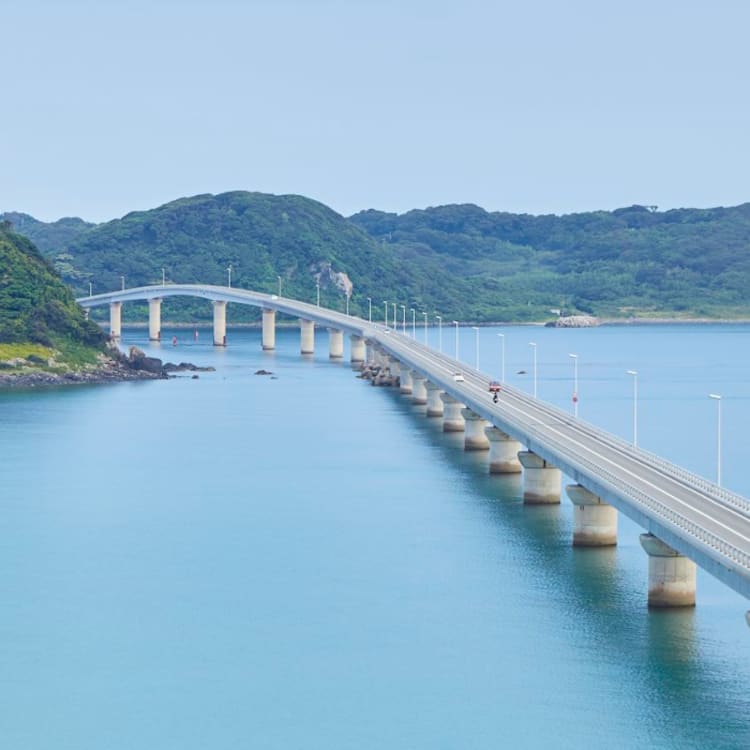
COVID-19 Health & Safety Information
Please note this page is no longer being updated..
For the latest information on entry to Japan, please visit the following page: COVID-19: Practical Information for Traveling to Japan
Information on the easing of travel restrictions to Japan (as of 11 November 2022)
*For passport holders from other countries, please see the links below for the Embassies and Consulates-General of Japan for more information.
PCR tests or quarantine on arrival are not required, regardless of vaccination status. For more information on the process and entry requirements, refer to the below image or visit this page to view the information in checklist form.
Process Map
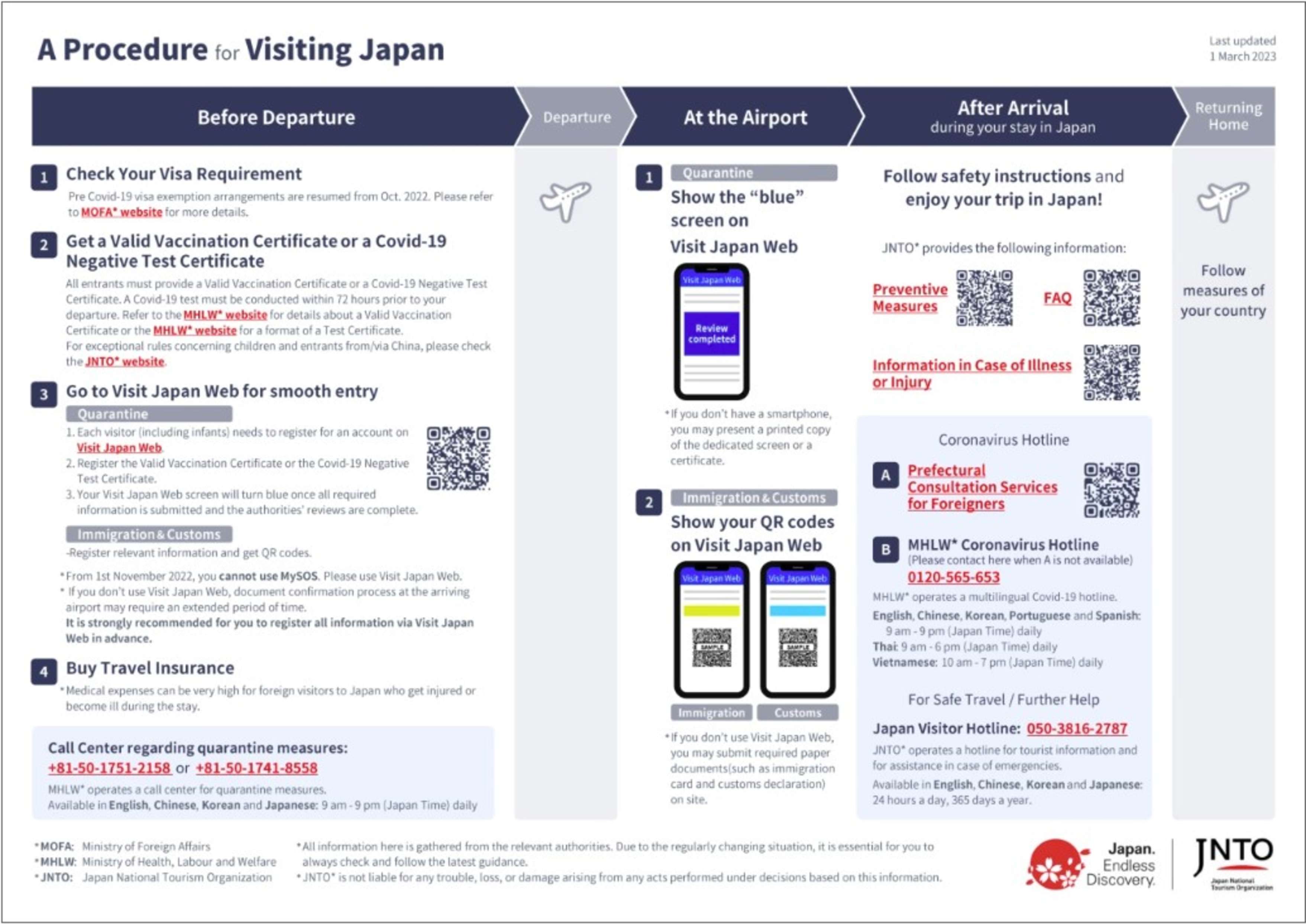
Useful Resources
Au / nz government travel advisories , visit japan / jnto sites .
The Coronavirus travel restrictions page is a travel advisory updated regularly in line with the official information provided by the Government of Japan.
COVID-19: Practical Information for Traveling to Japan is an information page built to help travellers plan a safe trip around Japan.
See specific measures taken by Japanese organisations below.

Airlines & Airports

The ANA Care Promise set of health and safety initiatives has been awarded a 5-Star COVID-19 Safety Rating from SKYTRAX, the highest possible rating, and one that only a few airlines worldwide has achieved.
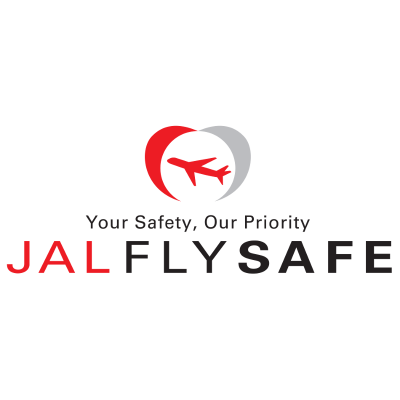
The JAL FlySafe set of health and safety initiatives has been recognised by Skytrax with a 5-Star COVID-19 Airline Safety Rating, along with a Diamond Certification by APEX Health Safety powered by SimpliFlying.
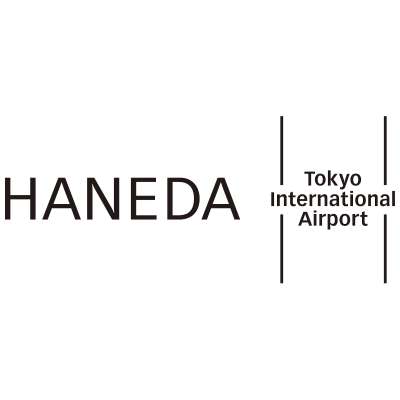
Haneda Airport’s webpage includes information on how to use airport facilities safely and measures to prevent the spread of infection, especially in regards to the 3 Cs: closed spaces, crowded spaces, close-contact settings.

Narita Airport has implemented nine key initiatives to prevent the spread of infection including the installation of transparent barriers, ensuring optimum air ventilation and stringent cleaning practices.
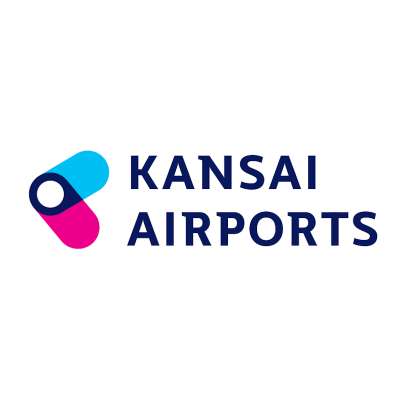
Kansai International Airport has a number initiatives in place to prevent the spread of infection including the use of thermographic cameras, increased cleaning and disinfection of surfaces and social distancing measures.

Railway Companies
Japan has an expansive railway network that is owned and operated by many companies. Japan Railways (JR) is the most well-known thanks to the popular JR Pass and high-speed shinkansen (bullet trains). Its vast and elaborate network can be a bit daunting to navigate at first - it's actually operated by six separate companies: JR Hokkaido, JR East, JR Central, JR West, JR Shikoku, JR Kyushu.
In particular, please note the popular Tokaido-Sanyo Shinkansen (Tokyo to Hakata) is run by both JR Central and JR West – JR Central operates the section from Tokyo to Osaka, and JR West operates the section from Osaka and Hakata.

JR Hokkaido services the northern island of Hokkaido and also operates the section of the shinkansen route between Shin-Aomori Station on Honshu and Shin-Hakodate-Hokuto Station in southern Hokkaido. Download the ‘Major actions on preventing the spread of novel coronavirus’ PDF from their website for more information.

JR East services eastern Japan including the capital of Tokyo and the north-eastern region of Tohoku. It also operates the Hokuriku Shinkansen which stops at cities such as Nagano, Kanazawa and Niigata.

JR Central services central Japan and operates the Tokaido Shinkansen, a popular route that runs between Tokyo and Osaka travels through major cities such as Yokohama, Nagoya and Kyoto. The ‘COVID-19 Protective Measures’ PDF is available to download from their website.

JR West services western Japan, including well-known cities such as Nara, Osaka, Kyoto, Wakayama, Kobe and Hiroshima. It operates the Sanyo Shinkansen which runs from Shin-Osaka Station to Hakata Station in Fukuoka Prefecture on the southern island of Kyushu.
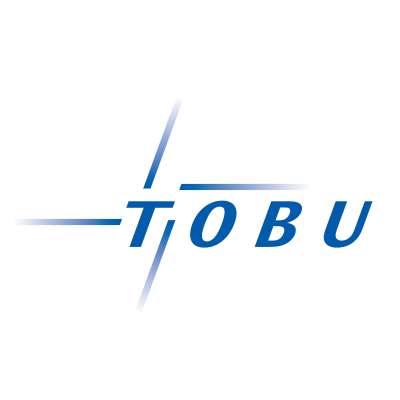
Tobu services the area of Tokyo and surrounds, providing connections to popular destinations such as Nikko, Asakusa, Tokyo Skytree and Kawagoe. Information on the latest measures to prevent the spread of infection is available to download from their website.
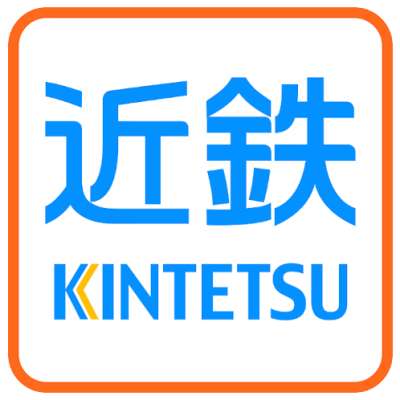
Kintetsu Railway services the areas of Osaka, Kyoto, Nara, Ise-shima (Mie Prefecture) and Nagoya. As part of a number of measures implemented to prevent the spread of infection, Kintestsu has sprayed the interior of its train carriages with an antiviral and antibacterial treatment.
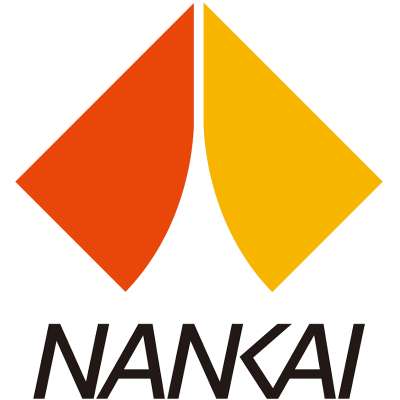
Nankai Electric Railway services southern Osaka Prefecture and Wakayama Prefecture. It connects the southern hub of Namba to Kansai International Airport, Wakayama and Koyasan. Information on health and safety measures that have been implemented is available to download from their website.

JR-West Hotels have implemented new 'Clean & Safety' hygiene standards, and have received the coveted Trusted Cleanliness Badge, a certificate issued by Trust You, one of the top class platforms in the hotel industry. (JR-West Hotels brands include Hotel Granvia, Hotel Vischio by Granvia, Nara Hotel and Potel.)

Prince Hotels has developed the Prince Safety Commitment, a set of new protocols for hygiene and disinfection to be applied to all the hotels under their brands. These will enable Prince Hotels to provide guests with a safe and clean environment during their stay.

Palace Hotel Tokyo has achieved the GBAC STAR™ Facility Accreditation and has become Sharecare Health Security VERIFIED™ with Forbes Travel Guide. These accreditations show Palace Hotel Tokyo is committed to implementing best practices and operating as safely as possible.

Imperial Hotel Osaka has received GBAC STAR™ accreditation and is Sharecare Health Security VERIFIED™ with Forbes Travel Guide. These demonstrate the hotel meets international hygiene standards for infectious disease prevention measures and is committed to following best practices to ensure the safety and comfort of its guests.

Destinations

Miyazaki Prefecture Tourism Association has produced a video to introduce the safety measures taken by the Miyazaki Tourism Industry for the post-COVID-19 era.

Attractions

Read about the health and safety measures that are in place at Tokyo Disneyland and Tokyo DisneySea as well as update on the status of rides, attractions, restaurants and other facilities at each theme park.
- JNTO Sydney
- COVID-19 Health & Safety Information
Please Choose Your Language
Browse the JNTO site in one of multiple languages

IMAGES
VIDEO
COMMENTS
-Register relevant information and get QR codes on Visit Japan Web for smooth entry into Japan. QR codes are generated after the registration. *Immigration and Customs procedures on Visit Japan Web are available at 7 major airports (Tokyo/Narita, Tokyo/Haneda, Kansai, Chubu, Fukuoka, New Chitose, Naha). About Visit Japan Web
U.S. citizens needing urgent assistance should contact us by using our inquiry form or phone (03-3224-5000). If you need after-hours assistance in an emergency, please call 03-3224-5000 and ask to speak with the Embassy's duty officer. Emergency Contact Information for U.S. citizens.
Thursday 17 November 2022. After two-plus years of tight border restrictions, Japan finally scrapped its daily entry cap and fully reopened to international tourism on October 11 2022. This means ...
On November 29, 2021, the Government of Japan announced strengthened quarantine measures in response to the emergence of the Omicron variant of COVID-19. Effective November 30, 2021 at 00:00, entry of new, non-resident foreign nationals (to include students on educational travel) will be suspended.
CONTINUED RESTRICTIONS FOR TRAVEL TO JAPAN. Travelers arriving from the United States - including all 50 states, the District of Columbia, and all U.S. territories - are now required to quarantine in a Japanese government-designated location for the first three or six days (depending on point of origin)of their 14-day quarantine. The areas in the United States from which travelers to Japan ...
Aug 31, 2022. Prime Minister Fumio Kishida said Wednesday that Japan will allow the entry of nonescorted visitors on package tours and raise the daily arrival cap to 50,000 starting Sept. 7 — a ...
The basics. It's official: Japan will reopen to tourism on October 11. Ad Feedback. Prime Minister Fumio Kishida announced the news in September at a press conference. "We will lift the ...
Read our guide on visa-free travel, valid vaccines, PCR tests and more here. Covid-19 restrictions are ever-changing and it can be hard to keep track of new information on Japan's border ...
For general inquiries regarding border measures for entry into Japan; Contact: Ministry of Health, Labor and Welfare. TEL: 03-5253-1111 (Japanese only) For inquiries regarding flight information; Contact: Ministry of Land, Infrastructure, Transport and Tourism, Civil Aviation Bureau, Director for Crisis Management Office. TEL: 03-5253-8700. 3.
"But from 11 October, Japan will relax border control measures to be on par with the US, as well as resume visa-free travel and individual travel," Kishida said at the New York Stock Exchange.
Japan is now open to travelers from all countries or regions. Travelers are required to provide either a valid COVID-19 vaccination certificate (3 doses) of WHO-approved vaccines or a certificate of negative result of pre-departure COVID-19 test conducted within 72 hours prior to departing from the originating country/region.
This movie introduces the new essential steps ahead of an unforgettable travel in Japan. General Information. Japan: the Official Guide. Japan National Tourism Organization. ... Animal Quarantine [Ministry of Agriculture, Forestry and Fisheries] Plant Protection Station [Ministry of Agriculture, Forestry and Fisheries]
No quarantine, testing or locator forms are required for entrants from the UK, regardless of vaccination status. Earlier this year the U.S. Department of State changed their travel advisory for Japan from a Level 3: "Reconsider Travel" to Level 1: "Exercise Normal Precautions," which was the level Japan before the start of the pandemic.
Japan - Level 1: Exercise Normal Precautions. Reissued after periodic review without changes. Exercise normal precautions in Japan. Read the country information page for additional information on travel to Japan. If you decide to travel to Japan:
Visa requirements. If you have a 'British citizen' passport, you can travel to Japan for tourism or business for up to 90 days. You will get a visa in your passport on arrival, and you do not ...
It's recommended to obtain insurance to cover medical costs related to COVID-19 in Japan. For travel insurance that covers Covid, we use Nomad Insurance by Safety Wing. Quarantine rules in Japan: What happens if I get Covid? Travelers are not required to quarantine upon arrival in Japan, provided that they are not suspected of having Covid-19.
Since Japan reopened to foreign tourists after the pandemic, "revenge travelers" have swarmed the country and its most popular attractions. More than three million people per month visited in ...
The study calculated quarantine lengths that were sufficient to prevent additional new COVID-19 infections caused by international travelers between China and 12 other countries from Feb. 13 through Feb. 19, 2023. Scotland was among the countries that would have benefitted from shorter quarantine times — three days — driven largely by ...
Japan welcomes solo travelers after 2 years of COVID-19 restrictions 02:42. Tokyo — A Japanese town will replace a barrier mounted to deter unruly tourists from taking photos of Mount Fuji after ...
TOKYO — Commuters at Tokyo's Shimbashi Station were greeted with a special edition of the Yomiuri newspaper on Monday. The big news was the victory of Yuka Saso at the U.S. Open on Sunday, the ...
Japan's New Tourism Policies To Combat Overtourism. According to the AP, Japan had more than 25 million visitors in 2023, and the figures in 2024 are expected to surpass nearly 32 million, a record set in 2019, according to the Japan National Tourism Organisation. To combat over-tourism, new fees and restrictions have already been introduced ...
0:30. Around two dozen passengers fell ill on a United Airlines flight from Vancouver, Canada to Houston, Texas on Friday. Approximately 25 people traveling in a group of 75 had nausea, according ...
Just like top-end Japanese models, the Numi 2.0 has an automatic deodoriser and a motion-activated lid that opens when you enter the bathroom and closes when you leave. Its spray wand has ...
A United Airlines plane that departed from Vancouver, Canada, was removed from service to undergo a deep cleaning after several passengers who had been on the same cruise ship reported feeling ...
The black screen installed just last week to block tourist snapshots of Mount Fuji now has several holes in it. ... Yamanashi prefecture, central Japan on May 24, 2024. The town that erected the ...
The Coronavirus travel restrictions page is a travel advisory updated regularly in line with the official information provided by the Government of Japan. COVID-19: Practical Information for Traveling to Japan is an information page built to help travellers plan a safe trip around Japan. See specific measures taken by Japanese organisations below.